carried interest
description: share of profits in an investment fund paid to the fund manager
86 results
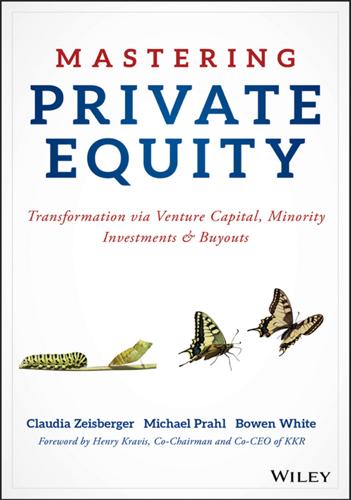
Mastering Private Equity
by
Zeisberger, Claudia,Prahl, Michael,White, Bowen
,
Michael Prahl
and
Bowen White
Published 15 Jun 2017
Proceeds shared with the GP in the third and fourth step are referred to as a GP’s carried interest (or profit share)—the key incentive for PE professionals—and is most frequently set at a 20% share of a fund’s net profits. An example of the generic language defining the steps in a distribution waterfall is set out in Exhibit 16.2.3 It should be noted that venture funds typically do not have a hurdle rate. Exhibit 16.2 Distribution Waterfall and Carried Interest CARRIED INTEREST: PE funds employ two common methodologies that determine when a GP is entitled to carried interest: all capital first carry and deal-by-deal carry with loss carry-forward.
…
The fee structure in PE is commonly referred to as “2 and 20” and defines how a fund’s investment manager and GP—and in turn its PE professionals—are compensated: the “2%” refers to the management fee paid by the LPs per annum to a fund’s investment manager while the “20” represents the percentage of net fund profits—referred to as carried interest or “carry”—paid to its GP. The clear majority of profits, 80%, generated by a fund is distributed pro rata to a fund’s LPs. As long as carried interest remains the main economic incentive for PE professionals, their focus will continue to be on maximizing returns, which in turn benefits the LPs. Exhibit 1.7 visualizes the flow of fees and share of net profits to the entities involved in a PE fund. Exhibit 1.7 PE Fees and Carried Interest Returns in PE are typically measured in both internal rate of return and multiples of money invested.19 Given a fund’s cost structure, its net return—that is, the return on capital generated by the fund net of management fees and carried interest—is the relevant metric for its investors and LPs will ultimately define success on that basis at the end of the fund’s life.
…
These offsets reduce the fee burden for LPs and shift a portion of the fee-based compensation from the GP to the limited partnership as a whole. CARRIED INTEREST: Proceeds from successful exits are distributed to a fund’s LPs and its GP in line with a distribution “waterfall” set out in a fund’s LPA.22 Carried interest is the share of a fund’s net profits paid to its GP—typically 20%—and serves as the main incentive for a PE firm’s principals. In a typical distribution waterfall, PE funds will return all invested capital and provide a minimum return to investors—a fund’s hurdle rate23 or preferred return—before any carried interest is paid out to the GP. After the hurdle rate has been reached, PE funds will typically include a “catch-up” mechanism that provides distributions to the GP until it has received 20% of all net profits paid out up to this point.
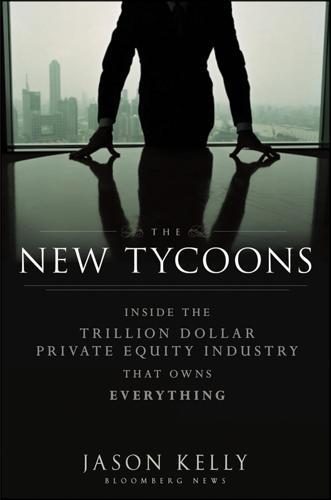
The New Tycoons: Inside the Trillion Dollar Private Equity Industry That Owns Everything
by
Jason Kelly
Published 10 Sep 2012
Those other industries, both of which are well-represented in Washington, did in fact initially give the private equity industry cover and ultimately helped delay any action on carried interest by the Congress. The emergence of a vocal Republican faction that had literally sworn not to raise taxes also helped stave off any changes. The bigger story around carried interest for private equity, though, may be what might be considered the political opportunity cost. The decision to make carried interest tax such a major issue right out of the gate meant that “Don’t you dare raise taxes on us billionaires” became the defining issue for an industry.
…
During the election year of 2008, little happened, and as the credit crisis dominated the headlines and talk turned to massive bailouts and Lehman-sized bankruptcies, private equity inched further out of the spotlight. With Obama’s arrival in early 2009, the industry assumed it was mostly a matter of when, not if treatment of carried interest would change. Talk began to bubble about cutting a deal, specifically a “blended” rate that would raise the taxes on some portion of carried interest, or peg a rate somewhere between capital gains and ordinary income. The debate over health care reform served to sideline the issue once again, and while there was some talk of using carried interest as a way to pay for Obama’s health plan, the architects of that legislation ultimately decided not to use any non-health care revenue as sources of money.
…
What appeared to be the final push came in the spring of 2010, when Baucus called representatives of the private equity real estate, hedge fund, and venture capital industries and said he was planning to use carried interest as a revenue generator that year. He and Levin negotiated a deal whereby 75 percent of carried interest would be treated as ordinary income, with the balance taxed as capital gains. What ultimately helped undo that effort–along with a growing anti-tax sentiment promoted by the Tea Party–was an element, shorthanded as the “enterprise tax,” that was designed to prevent private-equity executives from moving their carried interest into the firm itself and paying the lower rate when they eventually sold their interest in the firm (aka the enterprise).
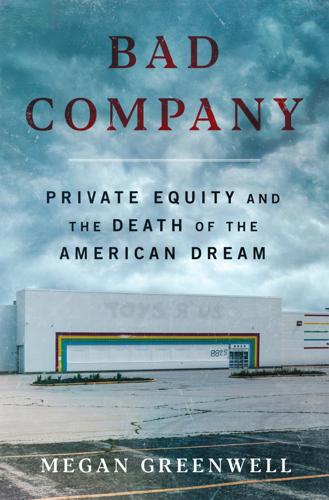
Bad Company
by
Megan Greenwell
Published 18 Apr 2025
To incentivize safe transport: Mary Childs and Kenny Malone, Planet Money, podcast, “Carried Interest Wormhole,” NPR, August 12, 2022, https://www.npr.org/2022/08/12/1117305695/carried-interest-wormhole. Presidents Obama, Trump, and Biden: Tim Murphy, “Biden and Trump Both Trashed Private Equity’s Favorite Tax Dodge. Surprise! It’s Still Here,” Mother Jones, May 2022, https://www.motherjones.com/politics/2022/05/carried-interest-loophole-biden-trump-private-equity-tax-break/. Victor Fleischer: Victor Fleischer, “Two and Twenty Revisited: Taxing Carried Interest as Ordinary Income Through Executive Action Instead of Legislation,” September 16, 2015, http://dx.doi.org/10.2139/ssrn.2661623.
…
But most importantly, private equity profits are treated not like those of every other imaginable type of business, but as “carried interest,” a structure unique to the finance industry. The concept dates back to the Middle Ages, when ship captains tasked with moving goods across the Mediterranean faced threats of shipwreck, piracy, and mutiny. To incentivize safe transport, whoever was waiting for the cargo would offer an incentive: a stake in whatever profits came from the future sales—a literal interest in what the ship carried. In modern times, carried interest has been treated not as regular income but as capital gains, which comes with preferential tax rates.
…
Kyrsten Sinema, the Arizona Democrat-turned-independent who killed the 2022 provision that would have closed the carried-interest loophole, received more than half a million dollars in private equity donations in the previous election cycle. The industry’s primary lobbying group, meanwhile, has long boasted about its ability to stave off efforts to regulate private equity’s favored strategies. The American Investment Council spends as much as $3 million a year lobbying in Washington on top of what firms themselves shell out; its CEO, Drew Maloney, wrote an opinion piece in the Arizona Republic urging Sinema and fellow Senator Mark Kelly to help preserve the carried-interest loophole. When Sinema did, Maloney crowed that “our advocacy helped prevent punitive tax increases that would make it harder for investors to continue to support jobs, small businesses, and pensions in every state

Secrets of Sand Hill Road: Venture Capital and How to Get It
by
Scott Kupor
Published 3 Jun 2019
This economic incentive drives the behavior on the part of the GP that we see in most portfolio companies; that is, paying a GP to sit on the board is very unusual (other than post-IPO, where compensation is par for the course). Carried Interest The heart of compensation for GPs (at least for those who are successful investors) is carried interest. It’s rumored that the term “carried interest” derives from medieval traders who carried cargo on their ships that belonged to others. As financial compensation for the journey, the traders were entitled to 20 percent of the profits on the cargo. That sounds very civilized, if not rich. I’ve also heard—although my Google search is failing me now—that the carry portion of carried interest referred to the fact that the traders were allowed to keep as profit whatever portion of the cargo they could literally “carry” off the ship of their own volition.
…
I’ve also heard—although my Google search is failing me now—that the carry portion of carried interest referred to the fact that the traders were allowed to keep as profit whatever portion of the cargo they could literally “carry” off the ship of their own volition. I prefer that story. Regardless of its historical origins, carried interest in the VC context refers to the portion of the profits that the GP generates on her investments and that she is entitled to keep. As with the management fee, the actual amount of carried interest varies among venture funds but often ranges between 20 and 30 percent of the profits. As it turns out, how we define “profits” and how and when the GP decides to distribute those profits to herself and her LPs is a matter for negotiation in the LPA.
…
To account for this, some LPAs introduce the concept of a “hurdle rate” into the profits calculations. A hurdle rate says that unless the fund generates a return in excess of the hurdle rate (this is a negotiated number, but often around 8 percent), the GP is not entitled to take her carried interest on the profits. If the fund exceeds the hurdle rate, then the GP can start collecting her carried interest as if the hurdle rate didn’t exist. So, as long as you clear the bar, you are good; fall short and you get nothing. A “preferred return” is another mechanism to accomplish this, but it is more LP favorable. Unlike the “clear the bar and take the money” aspect of a hurdle rate, a preferred return doesn’t just fall away when you clear it.

Our Lives in Their Portfolios: Why Asset Managers Own the World
by
Brett Chistophers
Published 25 Apr 2023
Nowhere, perhaps, is this dynamic – namely that of the asset manager capturing gains that one might have expected to flow to the state – clearer than in relation to the taxation of carried interest, which is therefore the final issue we will consider. Carried interest, as we have seen, is the real-asset asset manager’s main performance fee, calculated as a percentage of the profits that a fund generates. In the United States (the domicile of most major asset managers), as in many other countries, asset-management firms that are incorporated as partnerships, as most such firms conventionally have been, pay tax on carried interest at the capital gains rate. The logic of this tax treatment, such as it is, turns on the notion of risk: the asset manager, it is said, has put capital at risk, and thus carry represents a return on invested capital, and should be taxed as a capital gain.
…
The better the fund performs for its limited partners, the more those partners pay the general partner – which is to say, the asset manager. Again, performance fees are anything but standardised, but there is more uniformity across the market on these than there is on management fees. The most common performance fee is so-called ‘carried interest’ (or simply ‘carry’), which is a form of profit share paid on the basis of any gains realised through asset disposal. Often, carry is only paid if the fund achieves a certain level of financial return for its limited partners, referred to as the ‘hurdle rate’, and typically set at around 8 per cent, annualised.
…
Little wonder that, with its renowned ‘“do anything for a bonus” entrepreneurial culture’ (as one 2005 newspaper report put it), Macquarie – whose history is explored in Chapter 2 – has long been dubbed the Millionaires’ Factory.33 It is also interesting to note the relative contributions of the two types of fees to MIRA’s 2021 A$1.6 billion haul. Management fees accounted for 60 per cent, and performance fees for 40 per cent. Such a split is broadly typical in real-asset asset management, although of course it varies from year to year and from firm to firm. This is significant. Carried interest often captures the headlines (20 per cent!); but recurring, guaranteed management fees are asset managers’ bread-and-butter. Two final points are worth noting. One is that all of the above discussion of the fees charged by asset managers in the real-estate and infrastructure spaces refers to funds operating at the heart of asset-manager society – namely, where fund holdings confer on the asset manager significant, active control over the underlying physical assets.

Fortunes of Change: The Rise of the Liberal Rich and the Remaking of America
by
David Callahan
Published 9 Aug 2010
“They got what they paid for,” said Leo Hindery, who leads InterMedia, a private equity group, but opposed the carried interest loophole. In line with this theory, the Nation magazine noted that James Simons gave the maximum to Schumer’s committee around the time that the carried interest issue was before the Senate. The quid pro quo view surely explains the motives of some hedge fund and private equity donors, both in 2007 and afterward, and it fits with Schumer’s reputation as a willing handmaiden of Wall Street. At the same time, hedge fund donors started to favor Democrats by a large margin in 2000, well before the carried interest loophole emerged as an issue or Schumer headed up the DSCC.
…
Another populist, James Webb, also got c02.indd 49 5/11/10 8:51:58 AM 50 fortunes of change big cash infusions from the DSCC to win an expensive Senate race in 2006. Both Brown and Webb voted against the carried interest loophole. Hedge funds and private equity firms paid for a huge lobbying push to hold onto their tax perks in 2007. The single biggest contract for Washington lobbying that year was a $3.7 million agreement that the Blackstone Group signed with Ogilvy Public Relations Worldwide—with the goal of derailing the carried interest tax hike. It made sense that Blackstone would spend so much, given that its partners stood to lose many millions of dollars if the tax hike went through.
…
Nobody has done more in recent years to rope wealthy financiers into the Democratic Party. And, by many accounts, Wall Street got what it paid for. Schumer has taken Wall Street’s side again and again on key battles and has c02.indd 43 5/11/10 8:51:56 AM 44 fortunes of change convinced Senate colleagues to do the same. He has defended the tax loophole on carried interest income for hedge funds and private equity firms, has sought to cut the fees that Wall Street pays to the Securities and Exchange Commission (SEC), and has tried to block stricter oversight of the credit agencies that rate Wall Street debt. In a 2009 interview with the New York Times, John Bogle, the founder of the mutual fund colossus Vanguard Group, said about Schumer, “He is serving the parochial interest of a very small group of financial people, bankers, investment bankers, fund managers, private equity firms, rather than serving the general public.”3 Thanks to friends like Schumer, Wall Street was allowed to blow itself up— and take the economy with it—after an era of risky and unrestrained financial engineering.
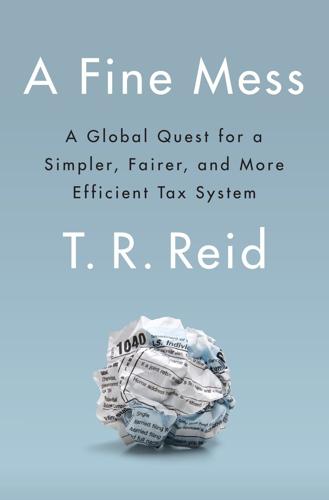
A Fine Mess
by
T. R. Reid
Published 13 Mar 2017
“These are guys that shift paper around and they get lucky.”13 One smart line of investment that the hedge fund guys make every year is their contribution to members of Congress. The politicians, in turn, serve their funders by protecting the carried-interest preference from all challengers. Despite its unpopularity, this particular tax break has proven so hard to eliminate that Barack Obama sought to circumvent it instead: he proposed to keep the carried-interest provision but to add a new requirement—it’s been dubbed the Buffett Rule—that says anybody with adjusted gross income over $1 million must pay at least 30% of it in income tax. It was this presidential initiative that prompted the financier Stephen Schwarzman to evoke the Nazis: “It’s like when Hitler invaded Poland in 1939.”
…
Romney conceded that he had accounts in the Cayman Islands but said this was not for tax purposes. To which the attorney Frank Schuchat responded, “To say you put money in the Caymans, but not for tax purposes, is like saying you bought a condom, but not for sex.” The carried-interest tax break is one of those things that make the United States exceptional when it comes to tax policy. “Most other countries would never think of a dodge like ‘carried interest,’” notes the tax expert Richard Bird. “It’s proof—as if any more proof were needed—that big money gets its way in the U.S. Congress.” And this mammoth tax gift to the richest Americans is one of the reasons that the problem of inequality is so much “more pronounced” in the United States than in other developed democracies.
…
Whether or not the preferential rate makes sense for investors who risk their capital in the markets, it is much harder to justify the special-case capital gains preference that gives investment bankers, hedge fund managers, and other salaried workers in the financial industry a generous tax break not available to employees in any other field. This giveaway is known as the “carried interest” rule; the name evokes a time when a clipper ship captain held a financial interest in the cargo he carried across the sea. It says that a broker or banker who invests other people’s money can count his own salary as “capital gains” and thus pay tax on it at the reduced, capital gains rate. Some of the biggest earners in the nation take advantage of this provision every year to save tens of millions of dollars in federal income tax.

Investment: A History
by
Norton Reamer
and
Jesse Downing
Published 19 Feb 2016
In recent years, the private equity industry compensation vehicle of carried interest (the profit share paid to the manager for performance) has also been the subject of much scrutiny. As a complex tax issue, carried interest has often been described as the primary means by which asset managers—including both private equity managers and hedge fund portfolio managers—rake in large amounts of compensation.27 Because carried interest and performance fees represent the majority of the large sums earned by the top-performing independent asset managers, the taxation of carried interest has become a controversial political issue.
…
As a complex tax issue, carried interest has often been described as the primary means by which asset managers—including both private equity managers and hedge fund portfolio managers—rake in large amounts of compensation.27 Because carried interest and performance fees represent the majority of the large sums earned by the top-performing independent asset managers, the taxation of carried interest has become a controversial political issue. Currently in the United States, carried interest has been defined as a capital gain for individuals receiving these payments, and as such it has been subject to materially lower capital gains tax rates. Supporters of characterizing carried interest as a capital gain argue that this policy encourages productive investment and economic growth. Detractors point to relative tax burdens and the undermining of a progressive taxation system. Whatever the relative merits of these positions, it is indisputable that carried interest and its capital gains treatment are certainly contributing to the rise and continued financial success of this new elite.
…
In public environments, these incentives are sometimes structured as stock options for management teams to earn money when the stock performs well. In private equity environments, these incentives are structured as carried interest, a portion of the profits of the partnership that goes to the manager. However, the future of investment must contemplate how some of these arrangements can distort behavior. Might the carried-interest feature cause certain stewards to treat it like a call option and invest in circumstances that are “heads I win, tails you lose”? Might there be opportunities for making corporate boards more shareholder friendly and reducing some cases of corporate abuses?
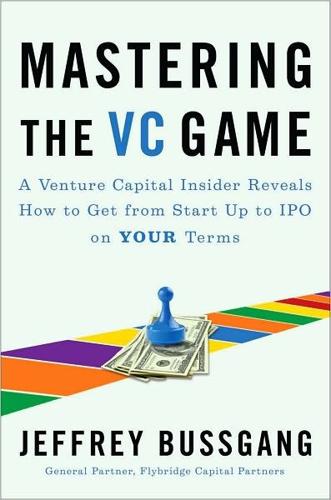
Mastering the VC Game: A Venture Capital Insider Reveals How to Get From Start-Up to IPO on Your Terms
by
Jeffrey Bussgang
Published 31 Mar 2010
But the potential for really big money lies in the “carried interest,” that is, the percentage of profits—usually in the 20 to 25 percent range—that a VC fund earns if their fund performs well. So what’s the VC business model? Raise a fund, get paid 2 to 2.5 percent annually in fees to manage that fund, cover salaries and expenses, and make investments that you hope will generate large capital gains. When those returns are actually generated (e.g., because the portfolio company has a successful sale or IPO), the VC funds typically get their carried interest in the capital gains. Let’s walk through a typical example to see how carry is calculated.
…
Let’s say there’s a $150 million fund with three general partners with 2 percent in annual fees and 20 percent in carried interest. The firm takes in $3 million in annual revenue and after paying for rent, support staff, associates, travel, et cetera, the three partners might take $400,000 to $500,000 each in salary. If the fund returns two times the capital, or $300 million, over the ten-year life of the fund, then $150 million is considered capital gains. The VCs get 20 percent of that amount, or $30 million in carry, to be divided up between the partners according to who has how much of the carried interest (a very sensitive division, the implications of which I’ll cover in a moment).
…
Note that associates and principals don’t typically have carry. Junior partners with small slivers of carry (perhaps having one or two of the twenty “carry points”) are usually supervised by senior partners who closely oversee the diligence and decision-making process. If the partners themselves are not on an equal footing in terms of carried interest, an individual partner may not be able to “speak for the firm” when it’s time to make tough decisions about follow-on rounds and M&A transactions. Even the most senior partners within a firm still need to get to consensus across the partnership. That said, when your “deal champion” (i.e., the investment professional that is advocating your case within the partnership) is a subordinate within the VC firm, it can be a harder and longer process than when the deal champion is one of the senior partners.
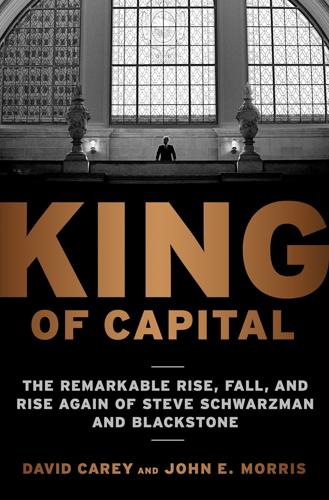
King of Capital: The Remarkable Rise, Fall, and Rise Again of Steve Schwarzman and Blackstone
by
David Carey
Published 7 Feb 2012
Even so, the general partner collects the full 1.5 percent from the limited partners every year no matter how much of the money has been put to work. When the funds themselves begin to wind down after five or six years, the management fee is substantially reduced.) Richer yet was the potential bonanza Blackstone stood to make in “carried interest.” By the conventions of the business, private equity firms take 20 percent of any gains on the investments when they are sold. If Blackstone raised the hoped-for $1 billion and the fund averaged $250 million in profits a year (a 25 percent return) for five years running—a not impossible mark—Blackstone would be entitled to $50 million a year, or $250 million over five years.
…
A more lucrative compensation scheme was hard to imagine. The fee structure ensured that if the fund was big enough, the financiers would become millionaires even if they never made a dime for their investors. The management fees alone guaranteed that with a large fund. If they made good investments and collected their 20 percent carried interest, they stood to make a lot more. While the individual partners at a successful midsized firm such as Gibbons, Green, or van Amerongen might earn $2 million in a good year, the industry’s kingpins, Henry Kravis and George Roberts, overseeing multibillion-dollar funds, each took home upward of $25 million in 1985.
…
“Steve from the early days didn’t like the [public investment fund] idea,” says Edward Pick, a senior banker at Morgan Stanley who was advising Blackstone about public market options at the time. Blackstone had good relations with the investors in its funds, Pick says, and Schwarzman didn’t see the need to turn to the public markets to raise investment capital. Still, KKR had raised $5 billion of permanent capital on which it would collect fees and carried interest. Round two in the race to the public markets had gone to KKR. The lesson Schwarzman drew: “Being the prime mover is critical.” CHAPTER 20 Too Good to Be True For Chinh Chu, the first sign that something was askew came in 2005 when Blackstone was weighing a bid for Tronox, which made titanium dioxide pigments used in paints.

Two and Twenty: How the Masters of Private Equity Always Win
by
Sachin Khajuria
Published 13 Jun 2022
Do we agree with the difference between returns before fees (gross returns) and returns after private equity’s cut (net returns)? And do we understand the incentives at play? The interaction between management fees and carried interest? The interaction between a firm’s stock price and its funds under management, and the investment performance of those funds? Or the social impact of the deals? Is there really any systemic risk? These tough questions are not new for private equity. Neither are calls for tax rates on carried interest to match income tax rates—or at least for the spread between them to narrow. The same applies to calls for caps on the levels of high-yield debt that leveraged buyouts can rely on to enhance investment performance, calls for more transparency and greater accountability of private equity professionals when investments go wrong, calls for labor protections when private equity or indeed any form of private capital is involved in a business, calls for funding security for pension arrangements in private equity–backed companies, calls for regulators to restrict what private equity can and can’t buy in one sector of the economy or another because the assets are deemed by regulators to be too “sensitive,” and calls for regulators to supervise more closely the management of the firms.
…
The interests of investors in private equity funds are aligned with their private equity managers because both sides are keenly awaiting their returns. Retirement systems want to pay out pension checks for their teachers, firefighters, and healthcare workers. Private equity firms want to pay themselves carried interest, their cut of profits. It would be nonsensical to walk away from a struggling deal when there’s a chance of a turnaround. Investment professionals tend to stick with a deal through its lifetime, whether it is a winner or ends up being a loser. The reality of being chained to a frustrating investment for years is partly why discussions in the investment committee about putting money to work in the first place are so rigorous and frank.
…
They will recalibrate the sensitivity of returns to positive surprises and negative shocks. They will monitor the growth in the target’s profits and cash flow. They will keep an eye on the time frame and the options for exit. And everyone on the team will have a rough idea of how much money they stand to make from the deal, including carried interest. So, our aspiring masters of private equity know that it does not matter if the walls of the deal maze around them are moving; it only matters that they have (or quickly gain) the ability and stamina to craft a worthwhile exit. Let’s take a closer look at how this might play out in a deal, in this case an investment that experienced big problems
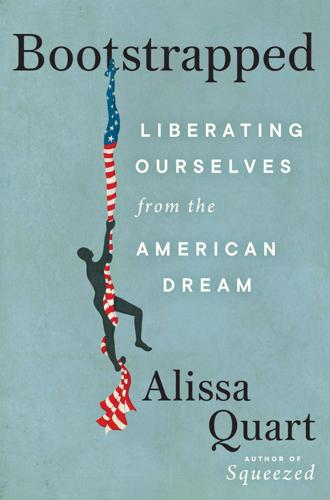
Bootstrapped: Liberating Ourselves From the American Dream
by
Alissa Quart
Published 14 Mar 2023
,” New York Times, August 12, 2019, https://www.nytimes.com/interactive/2019/08/12/upshot/are-you-rich-where-does-your-net-worth-rank-wealth.html. dubious loopholes like carried interest: The Tax Policy Center defines the carried interest loophole as “Carried interest, income flowing to the general partner of a private investment fund, often is treated as capital gains for the purposes of taxation.” “Briefing Book,” Tax Policy Center, accessed January 2021, https://www.taxpolicycenter.org/briefing-book/what-carried-interest-and-how-it-taxed. Warren’s own proposal: Emmanuel Saez and Gabriel Zucman, “Progressive Wealth Taxation,” BPEA Conference Draft, Brookings, Fall 2019, https://www.brookings.edu/bpea-articles/progressive-wealth-taxation/.
…
Giving to causes rather than paying taxes shouldn’t be an option. Taxes, as opposed to gifts from the rich, allow elected officials to decide where this money should be spent, and not just on pet causes that can offer tax benefits for the rich, dubious loopholes like carried interest. (The next time you meet a philanthropist with, say, a private skating rink and a home with pergolas, ask them about “carried interest.”) In this way, the Patriotic Millionaires closely follow the blueprint of the University of California at Berkeley economists Emmanuel Saez and Gabriel Zucman, whose study of wealth taxes influenced Senator Elizabeth Warren’s own proposal.

The Meritocracy Trap: How America's Foundational Myth Feeds Inequality, Dismantles the Middle Class, and Devours the Elite
by
Daniel Markovits
Published 14 Sep 2019
The founders who hold these shares include: Jeff Bezos (1), Bill Gates (2), Warren Buffett (3), Mark Zuckerberg (4), Larry Ellison (5), Larry Page (6), and Sergey Brin (9). Others among the top one hundred—for example, George Soros (60) and Carl Icahn (31)—owe their fortunes to carried interest. reported by one-percenters: Victor Fleischer, “How a Carried Interest Tax Could Raise $180 Billion,” New York Times, June 5, 2015, http://nytimes.com/2015/06/06/business/dealbook/how-a-carried-interest-tax-could-raise-180-billion.html. Fleischer reaches this result by inference from the legal structures typically employed by investment funds. In particular, investment funds are generally organized as partnerships, and the fund managers of investment funds are themselves also organized as partnerships.
…
These are not marginal or idiosyncratic categories of income (although the need to translate from tax categories to moral ones inevitably introduces judgment and imprecision into any accounting). Founder’s shares, carried interest, and executive stock compensation give nominally capital gains a substantial component of labor income, especially among the very rich. To begin with, roughly half of the twenty-five largest American fortunes, according to Forbes, arise from founder’s stock still held by the founders who built the firms. Moreover, the share of total capital gains income reported to the Treasury that is attributable to carried interest alone—to the labor of hedge fund managers—has grown by a factor of perhaps ten in the past two decades and now comprises a material share of all the capital gains reported by one-percenters.
…
A complete meritocratic accounting of earned advantage is more expansive than this and traces income through its shallow sources back to its deep roots—to reveal that some income nominally attributed to capital in fact originates in labor and therefore should be counted as earned through effort, skill, and industry. An entrepreneur who sells founder’s shares in her firm, an executive who realizes appreciation after being paid in stock, and a hedge fund manager who gets paid a “carried interest” share of profits on funds she invests (but does not own) all report capital gains income on their tax returns. But all these types of income ultimately reflect returns to the founder’s, the executive’s, or the manager’s labor and, the meritocrat insists, are on this account earned. A similar analysis applies to pensions and owner-occupied housing.
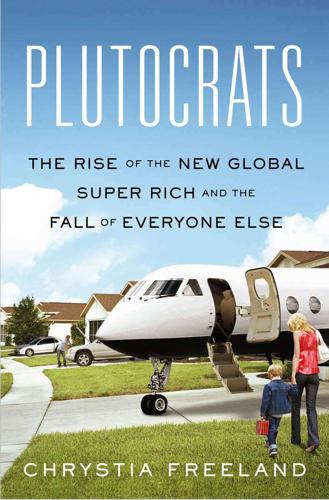
Plutocrats: The Rise of the New Global Super-Rich and the Fall of Everyone Else
by
Chrystia Freeland
Published 11 Oct 2012
As New York’s mayor, he has defended Wall Street with the hometown zeal of a Detroit politician supporting the carmakers or a prairie leader backing farmers. Nonetheless, here was Bloomberg on carried interest: “Since fair is fair, tax loopholes in the financial industry that are outdated should be closed, too, such as taxing carried interest at ordinary income rates. And I say this even though many of the people who would be affected are my constituents—so I assume I will get some phone calls later this afternoon.” GALT’S GULCH Carried interest is a very specific issue that touches a very specific group of people. The rise of Occupy Wall Street has brought a broader critique of the 1 percent to the fore, and in doing so has spurred some of the plutocrats to mount a more general self-defense.
…
Two other former Obama backers on Wall Street—both claim to have been on Rahm Emanuel’s speed dial list—recently told me that the president is “antibusiness”; one went so far as to worry that Obama is “a socialist.” In some cases, this sense of siege is almost literal. In the summer of 2010, for example, Blackstone’s Schwarzman caused an uproar when he said an Obama proposal to raise taxes on private equity firm compensation—by treating carried interest as ordinary income—was “like when Hitler invaded Poland in 1939.” However histrionic his metaphors, Schwarzman (who later apologized for the remark) is a Republican, so his antipathy for the current administration is no surprise. What is perhaps more surprising is the degree to which even former Obama supporters in the financial industry have turned against the president and his party.
…
“Even if you change the legislation the government won’t get a single penny more from me in taxes. I’ll put my money into my foundation and spend it on good causes. My money isn’t going to be wasted in your deficit sinkhole.” Indeed, within the private equity fraternity, which would be hardest hit by a change in the tax treatment of carried interest, this is very much the majority view. When I met him in his boathouse on Martha’s Vineyard, the cofounder of a private equity firm warned that raising the taxes on his industry would “kill” investment in this country and drive the money overseas. He also said it was morally unjust because private equity professionals like himself put their own money at risk and so did not deserve to have their profits taxed like regular income.
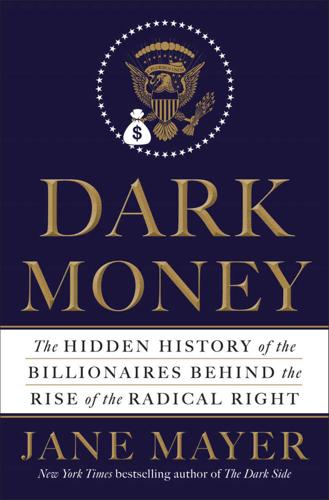
Dark Money: The Hidden History of the Billionaires Behind the Rise of the Radical Right
by
Jane Mayer
Published 19 Jan 2016
As Chrystia Freeland writes in her book Plutocrats, the June 21, 2007, initial public offering of stock in Blackstone, his phenomenally successful private equity company, “marked the date when America’s plutocracy had its coming-out party.” By the end of the day, Schwarzman had made $677 million from selling shares, and he retained additional shares then valued at $7.8 billion. Schwarzman’s stunning payday made a huge and not entirely favorable impression in Washington. Soon after, Democrats began criticizing the carried-interest tax loophole and other accounting gimmicks that helped financiers amass so much wealth. In the wake of the 2008 market crash, as Obama and the Democrats began talking increasingly about Wall Street reforms, financiers like Schwarzman, Cohen, and Singer who flocked to the Koch seminars had much to lose.
…
He described McCarthy as a “serial offender” who had played “a pretty big part in lowering the bar on what is acceptable in American politics.” — Shortly before the Kochs held their second summit of the year, a June get-together at the St. Regis Resort in Aspen, they got a break that enormously increased their network’s financial clout when House Democrats passed a bill, backed by President Obama, to eliminate the so-called carried-interest loophole. The idea of eliminating the special tax break enjoyed by private equity and hedge fund managers struck fear in the finance industry. Obama had won the support of a surprisingly large share of New York’s finance titans in 2008, but his stance on the tax—which would never make it through the Senate—enraged many of its heaviest hitters.
…
Financiers resented being blamed for the collapse of the economy in 2008, they took extreme umbrage when Obama had chastised them as “fat cats,” and they claimed that his administration was run by college professors who knew nothing about business. But Schwarzman and a number of other financiers regarded this as a new level of affront and flocked to the June Koch summit with their checkbooks in hand, determined to prevent his reelection. Ironically, it was probably Schwarzman’s own excesses that had brought the carried-interest loophole to critics’ attention. In 2006, when he decided to transform Blackstone from a private partnership into a public company, he had been required to disclose his earnings for the first time. The numbers stunned both Wall Street and Washington. He made $398.3 million in 2006, which was nine times more than the CEO of Goldman Sachs.
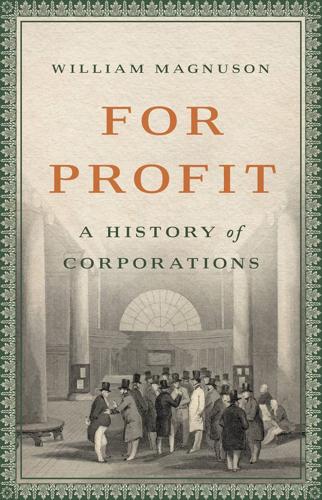
For Profit: A History of Corporations
by
William Magnuson
Published 8 Nov 2022
The head of Washington State’s pension fund said in a 1989 interview, “If you had to name, on the fingers of one hand, the people who have had the greatest influence on U.S. capitalism in the second half of the twentieth century, those three guys are there.”18 KKR structured its relationship with the pension funds to ensure that it would receive ample compensation for taking their money. The partnership agreements governing the investments contained a veritable thicket of fees payable to KKR. The most important of these were the management and carried-interest fees. These might best be analogized to a salary and a bonus. The management fee, like a salary, was paid to KKR annually regardless of performance, while the carried-interest fee, like a bonus, was contingent on results, fluctuating based on how well its acquisitions went. A typical management fee in KKR’s deals would pay the firm, every year, between 1.5 and 2 percent of all the money it had raised.
…
To give a sense of the magnitude, the fund’s 1982 management fee was $4.5 million a year; the fund’s 1986 management fee was $27 million. These fees were stackable: KKR could earn management fees on each of its funds, so the firm was making tens of millions of dollars a year simply for taking investors’ money. The carried interest, on the other hand, gave KKR a percentage of any profits it made from buying and selling companies. A typical carried-interest fee gave KKR 20 percent of any profit above a certain threshold (or “hurdle”)—in effect, it had to beat the market in order to earn the fee. But other fees abounded as well: there were investment banking fees, transaction fees, and fees for the use of KKR associates whom KKR placed on the boards of its portfolio companies.
…
Enormous fees were paid to the advisors and participants in the deal as well: the investment banks working for KKR made at least $400 million in fees, which by one estimate amounted to roughly $48,000 an hour for the work each banker put in. KKR itself received a $75 million transaction fee, in addition to its usual management fee and future carried interest. To celebrate the acquisition, KKR threw a closing dinner in the Pierre Hotel’s grand ballroom with four hundred investment bankers, lawyers, and colleagues, where they dined on lobster, veal, and a three-foot-high cake decorated with Nabisco products, accompanied by Dom Perignon.35 The most damaging moment, among many, came when Johnson gave a long interview to TIME.
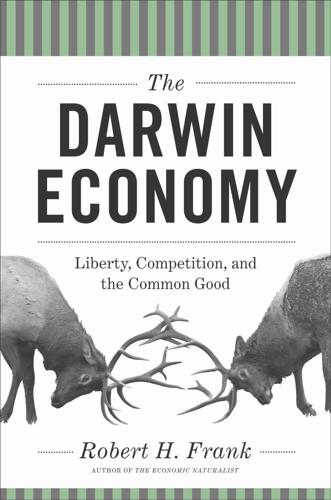
The Darwin Economy: Liberty, Competition, and the Common Good
by
Robert H. Frank
Published 3 Sep 2011
These managers also enjoy remarkably favorable tax treatment, for reasons that no one can seem to explain with a straight face. For example, even though “carried interest”—mainly their 20 percent commission on portfolio gains—has the look and feel of ordinary income, it’s taxed at the 15 percent capital gains rate rather than the 35 percent top rate for ordinary income. That provision alone saved Mr. Paulson some $800 million dollars in taxes in 2007. Congress periodically considers proposals to tax carried interest as ordinary income. To no one’s surprise, financial industry lobbyists are always quick to insist that doing so would kill the geese that lay the golden eggs.
…
To no one’s surprise, financial industry lobbyists are always quick to insist that doing so would kill the geese that lay the golden eggs. The deals brokered by their clients often create enormous value, to be sure. Yet the proposed legislation would not block a single transaction worth doing. The same deal that currently augments a hedge fund manager’s after-tax income by $1 million would augment it by $765,000 if carried interest were taxed as ordinary income. Can anyone credibly claim that this would make him abandon the deal? Economic analysis suggests that higher taxes on hedge fund managers would actually boost production in other sectors of the economy by alleviating wasteful overcrowding in the market for aspiring portfolio managers.
…
See Civil Aeronautics Board California: pollution from cars in, 113; Proposition 13 in, 48–49; starve-the-beast strategy in, 47–50 229 230 INDEX campaign finance: government waste reduction through reform of, 51; perception of corruption in, 57 Canada, lack of corruption in, 56 cap-and-trade system, 181 capital gains tax rate, 163 capitalism: assumption of greed in, 33; labormanaged firms in, 32–34; task specialization in, 43 car(s): congestion fees for, 113–14, 182–83; context in evaluation of speed, 26; gasoline prices’ effect on design of, 181; need for corporations in industry, 90; pollution regulations for, 113; taxing by weight, 183–84 carbon dioxide tax, 179–82; cap-and-trade system as, 181; and climate change, 4, 179–82, 215; pace of implementation of, 4, 180–81 carried interest, 163 Carter, Jimmy, 112 cash-on-the-table metaphor, 31, 32, 35–36, 43 CEOs: before-tax versus after-tax incomes of, 154–55; competition in hiring of, 153–54; decision leverage of, 151–52; income growth of, 1, 61, 149–55; relationship between pay and ability of, 149–55; spending by, 60, 78 Cervantes, Miguel de, 215 Chicago Board of Trade, 177 children: helmet rules for, 187–89.
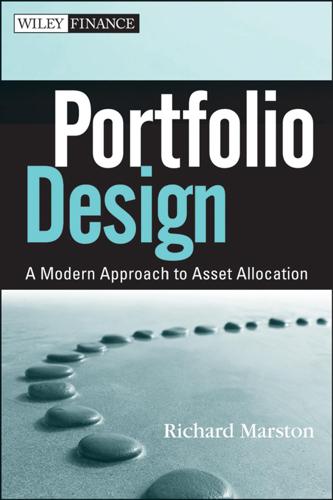
Portfolio Design: A Modern Approach to Asset Allocation
by
R. Marston
Published 29 Mar 2011
Since CA has a large share of the institutional market, its index covers upward of 80 percent of all VC funds in existence. The index begins in 1981. Metrick (2007, Chapter 3) provides an analysis of the biases in each index. The returns on SHE are actually lower than those on CA despite the fact that the latter nets out management fees and carried interest. He uses a rough estimate of management fees and carried interest to adjust the SHE returns to a net basis. This results in a 7.5 percent gap between the CA and SHE indexes.6 Metrick argues that the CA index has survivorship bias due to the fact that many VC firms attract institutional money only after they have had successful VC funds.
…
The drawdown period typically takes several years, so the investors must keep the capital in liquid form in the meantime. Capital is typically committed for 10 years with limited extensions at the discretion of the general partners. Fees generally take two forms, a management fee levied on the committed capital and an incentive fee (termed carried interest or carry) based on performance. A typical fee structure involves a 2 percent management fee and a 20 percent incentive fee. The 2 percent management fee is levied on the committed capital from the beginning of the fund regardless of how much has been drawn down. So if there is a $100 million fund with capital committed for 10 years, then the total management fee will be $20 million over the 10-year period ($2 million per year).2 The incentive fee kicks in after the limited partners have recovered their committed capital.
…
Similarly, the 20 percent incentive fee follows different patterns. The incentive fee typically does not kick in until after the limited partners have recovered their capital. So if the limited partners have committed $100 million in capital, payouts from the investments must rise above $100 million before the general partners begin to receive carried interest. Thereafter, the GPs will be paid 20 percent of any returns. So if the fund eventually closes out with $200 million in exit proceeds, the GPs will earn $20 million (i.e., 20 percent of $200 million - $100 million). But some firms base their carry on the difference between the exit proceeds and the investment capital rather than committed capital.
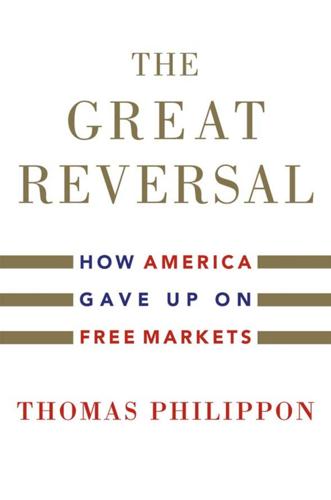
The Great Reversal: How America Gave Up on Free Markets
by
Thomas Philippon
Published 29 Oct 2019
They benefit from unjustifiable tax advantages for carried interests. Carried interest is the portion of an investment fund’s returns eligible for a capital gains tax rate of 23.8 percent instead of the ordinary income tax rate of up to 37 percent. President Trump promised to close the loophole during his presidential campaign, but Congress caved in to the lobbying of private equity firms and did not close the loophole. Instead of an outright repeal, Congress required that a fund’s general partners hold the relevant investments for three years instead of one. Moreover, private fund managers discovered a way to keep the carried interest advantage in the tax law’s exemption for corporations.
…
Moreover, private fund managers discovered a way to keep the carried interest advantage in the tax law’s exemption for corporations. They set up corporate structures for executives entitled to receive carried interest. The second pitfall is that the US lacks a framework for data protection and data ownership. US banks want to keep control of their clients’ information to stave off competition. The same debate occurred in Europe, and, as you might expect, European banks lobbied hard against the idea of sharing their data. Unlike in the US, however, where legislators caved in immediately, the EU pressed ahead. Their fortitude was a consequence of the General Data Protection Regulation (GDPR), which essentially states that people own their data.
…
Valeo (1976), 182 bundling, 19 Bureau of Labor Statistics (BLS), 41, 42 business dynamism, decline in, 81 Cagé, Julia, 192, 193 campaign finance contributions, 176–181; impact on policy choices, 9; and future of Europe’s free markets, 148–149; and endogeneity bias, 157–160; skewness of, 166–170; soliciting, 176–177; laws regulating, 181–182; measuring impact of, 182–186; Citizens United v. FEC, 186–189; and lobbying, 189; benefits for politicians and business groups, 189–192; in Europe, 192–194, 202–203; and state politics in US, 195–197; difficulties in tracking, 197–202 capital, growth rate of, 65 capital share, 108 Cardiff Reports, 136 Caree, Martin, 147 carried interest, 221 Carril, Rodrigo, 288 cartel enforcement, 146–147 Case, Anne, 223, 229 cell phones. See mobile telecommunications Center for Responsible Politics, 184 Century Aluminum, 160 Chalmers, John M. R., 220 Chamberlin, Edward, 87 Chicago School of antitrust, 87 China shock, 58–60, 291 Churchill, Winston, 129–130, 207 Citigroup, 249 Citizens United v.
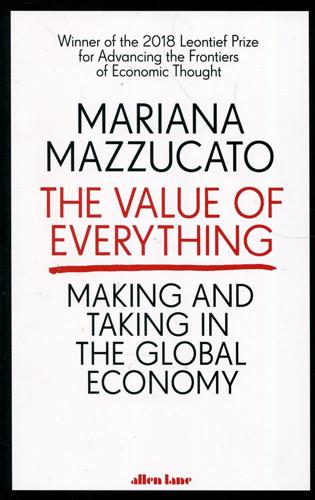
Value of Everything: An Antidote to Chaos The
by
Mariana Mazzucato
Published 25 Apr 2018
These include paying themselves fees (on top of fees paid to consultants, investment bankers, lawyers, accountants and the like) for any transactions undertaken (the acquisition itself, acquisitions of other companies, the sale of divisions and so on), paying themselves monitoring fees as part of their role on the boards of these companies, and other service fees. All in all, this results in a fixed component for them of about two-thirds of the general partners' compensation.44 The final element of the PE firm's compensation is carried interest - the investment manager's share of the profits of an investment above the amount the manager committed to the partnership. For many years now, market practice has been that carried interest is 20 per cent of the profits generated over and above an agreed hurdle rate - i.e. a return on an investment below which a company will not pursue an investment opportunity or project. This element of the compensation is specifically meant to motivate general partners to perform, and PE capital gains are taxed at a favourable rate.
…
This element of the compensation is specifically meant to motivate general partners to perform, and PE capital gains are taxed at a favourable rate. But in practice, fees are so high that carried interest amounts to only about a third of general partners' compensation. PE firms also protect themselves by loading down the companies they acquire with debt, typically 60-80 per cent of the cost of an acquisition. Consider this: if an asset worth 100 is bought with 30 put in as equity by the investment manager and 70 from debt, the investment manager can make a 100 per cent return if the debt is paid off and the equity value goes up to 60.
…
In 2015, the five biggest care home chains controlled about a fifth of the total number of care home beds in the UK. These operators were attracted by stable cash flows, part of which came from local authorities, and opportunities for financial engineering: cheap debt; property which could be sold and leased back; tax breaks on debt interest payments and carried interest; and - ultimately - frail and vulnerable residents whom the state would have to look after if the business failed. The corporate structures of some care home owners became exceedingly complex and often hidden in tax havens, while corporation tax payments were low or nil. Given that local authorities still funded many care home placements and that the nurses employed in the homes had been state-trained, opaque corporate structures and minimal tax payments are hardly the way to provide an essential public service.

The Optimist: Sam Altman, OpenAI, and the Race to Invent the Future
by
Keach Hagey
Published 19 May 2025
Most startups fail, but those few that succeed—particularly in the tech industry, where the incremental cost of selling an additional widget is near zero—tend to succeed spectacularly, more than making up for all the losers.19 From the very first venture-funded startup, Fairchild Semiconductor, in 1957, Silicon Valley’s tech industry has been largely funded by venture capital, from Apple to Google to Facebook to just about any startup you’ve ever heard of today. The main problem, in Graham’s view, was the way that VCs are paid—typically 2 percent of the amount of money they manage each year, plus a percentage, usually 20, of the gains, known as “carried interest” or just “carry.” Because they were paid according to how much money they managed, they had an incentive to manage as much money as possible. Since any individual VC could only do so many deals to invest that money, they had an incentive to put as much money into each investment as possible, bloating valuations so much that the companies are left with a very small number of possible buyers outside of going public—a major factor at play in the destructive dot-com bubble of the late 1990s.
…
To expand YC in the manner he desired, Altman needed more cash, and to get it he would turn the accelerator into the very thing it was founded to push back on: a venture capital fund. He began exploring raising a new fund that would make later stage investments in YC companies, and in the process earn the kind of fees that venture capital funds earn: around 2 percent of the amount managed annually, plus carried interest of around 20 percent of the profits. To run the fund, Altman decided to pursue someone from beyond the insular venture capital clique of Sand Hill Road. “I wanted someone who was a real company operator,” Altman said. “Because one of the critiques of YC is you give good advice to early-stage startups, but then you know nothing about how to scale a startup, which is true, but neither do most VCs, in my opinion.
…
But what was this about returns not going to OpenAI shareholders? The board began to ask Altman about it, and over the course of months of going back and forth, eventually learned that Altman owned the fund personally, and had been raising money from LPs to fund it. In a normal arrangement, that would mean that Altman got carried interest, or “carry”—the fees and profit share that normally accrue to the creator of a fund. OpenAI has said Altman had no financial stake in the fund, and had just set it up personally because it was the fastest way to do it. (Initial answers to the board had been about the tax advantages of this structure.)
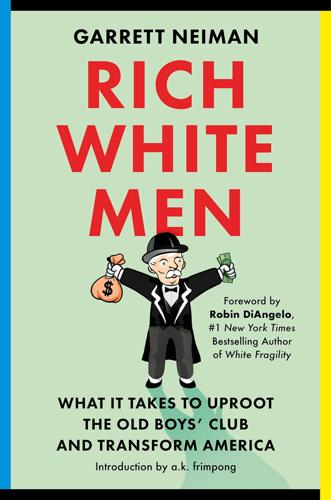
Rich White Men: What It Takes to Uproot the Old Boys' Club and Transform America
by
Garrett Neiman
Published 19 Jun 2023
Harvard was grooming us to become “triathletes” who could hold leadership roles in three different arenas: business, government, and nonprofits. The program’s principal benefactor is David Rubenstein, a white male billionaire who made his fortune as the cofounder and CEO of Carlyle Group, the private equity giant. Rubenstein is known for his charitable giving but also for his fierce resistance to closing the carried interest loophole, which enables Rubenstein and other finance moguls to avoid $180 billion in taxes every decade. Bernie Sanders, Hillary Clinton, and Donald Trump all campaigned against the loophole, but efforts to close it were defeated by the American Investment Council, a lobbying organization that was chaired at the time by one of Rubenstein’s lieutenants.1 The measure died three votes short of the majority it needed in 2010—and the loophole advantage hasn’t been seriously challenged since then.
…
As a result of practices like these, corporate power—and profits—are becoming increasingly concentrated. Winner-take-all economic systems sometimes produce profitable innovations that benefit society, but they also encourage freeloading. When the American Investment Council aligns otherwise-competing private equity firms to protect the carried interest loophole, that’s anticompetitive—and antidemocratic, since the public’s desire to close the loophole is suppressed. Extractive actions like these enabled Amazon and Tesla—the companies led by Jeff Bezos and Elon Musk, the world’s two richest men—to pay zero income taxes in 2018.9 When rich white guys deplete public infrastructure—such as the public universities that educate our workforces and the roads that get employees to our offices—without renewing it, we are engaging unsustainably, enriching ourselves at the expense of the public good.
…
And it means taking on corporate tax evasion, including leveraging America’s soft power to prevent other countries from serving as tax havens for rich white American men and their companies. On an individual level, it means overhauling a tax system that indulges the wealthy. To level the playing field, America must close loopholes like the carried interest loophole, abolish the $1 trillion-per-year tax deductions program, implement robust inheritance taxes to combat the literal reinvention of aristocracy, and tax capital gains as ordinary income because, in a capitalist system, few things are more ordinary than growing one’s capital. It must also reinstitute a highly progressive tax system that accounts for the fact that it is expensive to be poor and the fact that rich white men’s monopoly on power is unjust—and inefficient.

The Vanishing Middle Class: Prejudice and Power in a Dual Economy
by
Peter Temin
Published 17 Mar 2017
The top earners made about $1 billion apiece in 2014 and again in 2015 even though their funds did not fare well. These incomes are lightly taxed due to the carried interest exemption, a tax loophole that taxes the income of hedge fund managers as capital gains instead of labor income, as shown dramatically by presidential candidate Mitt Romney’s tax returns. He paid taxes of less than 15 percent of his high income (which was smaller than the financial superstars’ incomes just described).24 The carried interest loophole is only one of the ways that members of the FTE sector reduce the taxes they pay. As congressional leaders were completing a massive tax and spending bill in late 2015, lobbyists descended from those that started in the early 1970s added fifty-four words that preserved a loophole for real estate and Wall Street investors that enabled them to put real estate in trusts to avoid taxes.
…
As congressional leaders were completing a massive tax and spending bill in late 2015, lobbyists descended from those that started in the early 1970s added fifty-four words that preserved a loophole for real estate and Wall Street investors that enabled them to put real estate in trusts to avoid taxes. The carried interest exemption and real estate trust provision are only two examples of tax loopholes initiated and maintained by lawyers and lobbyists for wealthy people.25 The rapid growth and high returns in finance raise questions about the role of finance in economic growth. The great changes in trade and production after the end of Bretton Woods clearly required active finance to accommodate, and there is no reason to deny the importance of finance in allowing economies to adapt to new conditions.
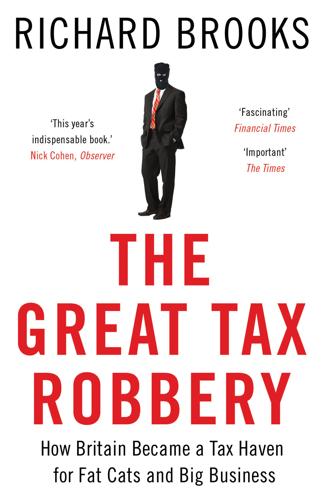
The Great Tax Robbery: How Britain Became a Tax Haven for Fat Cats and Big Business
by
Richard Brooks
Published 2 Jan 2014
‘His lobbying had been extremely effective.’27 This was the kind of time frame the private equity industry, which typically hangs around three to six years before cashing in, could deal with. Its leading lights made their serious income by putting in a small amount of their own money, typically between 1 and 3% of the investment in a fund, in return for perhaps 20% of the fund’s profit. Treated as a capital gain on an investment, this so-called ‘carried interest’ would be taxed at a quarter of the top income tax rate, or even less after other allowances. As the industry took off over the following years, expanding six-fold to attract £34bn worth of investments in 2006, the private equity fund managers scooped the jackpot.28 One of their number, alas, forgot to put his cross in the ‘no publicity’ box.
…
Completing the private equity circle of tax avoidance, Murphy’s most significant investment is almost certainly in Alliance Boots (on the board of which he sits), which we have already seen avoiding tax at both the corporate level by paying vast sums of interest offshore, and at the ownership level through Swiss and Gibraltar holding companies and trusts. Now its British, but non-domiciled, private equity manager sitting in London can escape tax when he cashes in his ‘carried interest’. KKR’s sale in 2012 of just half of its stake to an American chain for a £3bn gain suggests the non-dom tax break could prove highly valuable. It was soon reported that Murphy was one of seven out of KKR’s eight UK partners to claim the advantageous tax status, the others not British-born.34 The non-dom tax break, it was clear, was handing a competitive advantage in the battle for control over expanding swathes of British business to those with little attachment to the country.
…
Since over half the company’s income came in the form of interest paid tax-deductibly by British PFI companies controlled by HSBC – reducing their total tax bills to a piddling £0.9m in 2010/11 – the structure was highly tax effective.16 Nowhere was it better exemplified than at the Home Office and its PFI contract with Annes Gate Property plc. The millions that this company was paying on loans carrying interest at 14.75% headed to its owner and funder, HICL in Guernsey. The tax efficiency of PFI could sit gallingly alongside the real world consequences of the exorbitant initiative. When in 2011, for example, HICL bought a stake in the company running a 35-year PFI contract for the Pinderfields hospital in Wakefield, it acquired a loan that would pay over £1m a year ultimately to Guernsey.17 There of course it would not incur any of the tax that might in some small way have compensated for the £20m deficit back at the hospital trust, which was caused by the PFI payments in the first place and by 2012 had led to job cuts and nurses having to clean the wards.18 For many companies owning interests in PFI companies the offshore flit was irresistible.
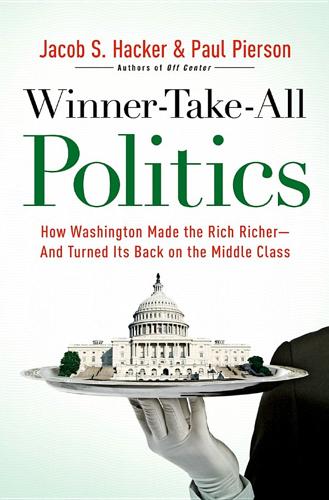
Winner-Take-All Politics: How Washington Made the Rich Richer-And Turned Its Back on the Middle Class
by
Paul Pierson
and
Jacob S. Hacker
Published 14 Sep 2010
In 2007, the top twenty-five hedge fund managers earned nearly $900 million on average.9 Despite their awe-inspiring incomes, some of these financiers have been able to exploit features of tax law that predate the rise of hedge funds to pay only a 15 percent federal tax rate. Yes, 15 percent. “Carried interest” provisions allow fund managers to treat some of the spectacular fees investors pay them as capital gains—a favorable treatment supposedly reserved for those who are putting their own investments at risk. Warren Buffett used to say that it was outrageous that he and his secretary paid the same tax rate. Those benefitting from the “carried interest” loophole can do him one better. They pay a dramatically lower rate than their secretaries. As egregious as this loophole is, the defense game of Wall Street supporters like Schumer kept it firmly in place.
…
Take one of the more egregious examples: the ability of private equity and hedge fund managers to treat much of their extraordinary incomes as capital gains, subject only to a 15 percent tax rate. (In 2006, the top twenty-five hedge fund managers earned nearly $600 million on average, with the richest, James Simons, taking in $1.7 billion.)13 The “carried interest” provision that allows this sweetheart deal is a bug in the tax code that predates the rise of hedge funds. But while this loophole is almost universally viewed as indefensible (and may finally be closed a bit in 2010), it has been protected for years by the fierce lobbying of its deep-pocketed beneficiaries and the strong backing of Wall Street supporters like Senator Chuck Schumer, Democrat of New York.
…
W., 17, 69, 186, 191–93, 199, 208, 210, 217, 265, 267, 293 Bush, George W., 17, 34, 41, 53, 105, 152, 157, 183, 186, 192, 193, 195, 200, 201, 210, 213, 214, 216, 217, 219, 221, 222, 223, 230, 233, 234, 236, 238–39, 245, 250–51, 253, 254–55, 258, 264, 265, 266, 271, 280, 293–94, 304 business: anti-labor agenda of, 55, 121–24, 127–32, 135, 219, 303 conservative support for, 122–23 Democrats supported by, 53, 86, 127, 129–32, 140, 174–88, 220–21, 223–52 economic reforms opposed by, 79–80, 86, 87–88, 130–32 financial resources of, 74, 121–22, 131, 170–72, 179–80, 209 “grassroots” campaigns by, 66, 89, 114, 119–27, 131, 144, 179–80, 274 inside vs. outside strategies of, 121 large, 119–27, 128, 129–32, 179–80, 205–6, 231, 275–78, 279 lobbyists for, 89, 117, 118, 124–26, 135–36, 144, 183–84, 198, 205–7, 218, 238–39, 275–77 organizations for, 88, 104–7, 116–36, 144, 160, 179–80, 205–6, 231, 275–78, 279, 291; see also specific organizations political influence of, 65–66, 74, 79, 84–85, 104–7, 110–12, 116–36, 150–51, 160, 169, 170–72, 179–80, 183–84, 197–98, 207, 230–31, 242–43, 271–75, 282, 292–93, 304 Powell memorandum on, 117–18, 119, 125 regulation of, 55–56, 116–36, 179–80, 187, 205–6, 219–21, 246–47, 273–77 Republicans supported by, 34, 49, 53, 65, 86, 121–26, 129–32, 140, 157, 170, 174–88, 189, 194–222, 230–31, 244–46, 267 small, 119–20, 129–30, 131, 205–6, 243 tax reform opposed by, 47, 49, 50, 64, 106–7, 124–25, 132–34, 177, 179–80, 187, 312n see also corporations business cycles, 17–18 Business-Industry Political Action Committee, 122 Business Roundtable, 120, 121, 125, 126–27, 129–30, 205–6, 231 Byrd, Robert, 130–31 cable networks, 106, 156–57, 158 California, 84, 176, 240, 247, 300 Campaigns and Elections, 203 campaign spending, 66, 118, 121–22, 150–51, 163–64, 166, 167, 169, 170–84, 197–98, 203, 207, 209–10, 219, 223–52, 258–59, 271–75, 276, 304 Campbell, Anne, 176 Canada, 29, 31, 38–39, 52, 58, 60, 68 Cao, Joseph, 337n capital gains, 14, 16, 18, 39, 46, 50–51, 99–100, 133–34, 151, 214, 228–30, 312n Carlson, Tucker, 147 Carlton Group, 133–34 “carried interest” provision, 51, 228–29 Carter, Jimmy, 98–100, 116, 126–27, 130, 131, 132–33, 134, 137, 141, 152, 172–73, 175, 184, 186, 202, 255 Carville, James, 5 Cato Institute, 209 Census Bureau, U.S., 13, 311n Center for American Progress, 266 Center for Responsive Politics, 207, 227 Chafee, Lincoln, 265 Chamber of Commerce, 119, 127, 128, 129–30, 205–6, 231, 275–78, 279 Cheney, Dick, 189–90, 217 chief executive officers (CEOs): autonomy of, 231, 292–93 conflicts of interest of, 55, 66 incomes of, 1, 16, 56, 62, 66–67, 154–55, 198 international comparison of, 62–65 organizations for, 119–21 pay packages for (executive compensation), 2, 57, 61–66, 70, 198, 219–21, 246–47, 279, 319n, 320n, 335n political influence of, 117–19 retirement benefits of, 64 Chiles, Lawton, 131, 181 Christian Coalition, 203 Christian Conservatives; see Religious Right Christian Right, 139, 146–49, 160, 201–4, 205, 234–35 Church, Frank, 175 Citigroup, 71, 226, 249–50, 254, 261 Citizens United case, 293 Civic Culture, The (Almond and Verba), 144 civic groups, 107–12, 139, 143–45, 147, 155, 156, 158 civil rights movement, 95, 138, 139, 190, 202, 235, 275 class divisions, 29, 75–77, 131–32, 148, 151–55 see also specific classes Class War?

People, Power, and Profits: Progressive Capitalism for an Age of Discontent
by
Joseph E. Stiglitz
Published 22 Apr 2019
Worse, these funds have a much-criticized record of restructuring in ways that lead to large job losses and heavy debt, with the restructured firms often going into bankruptcy not long after the private equity firms sell them off. The reduced tax rate that private equity funds manage to pay, due to the so-called carried-interest loophole, was something Trump railed against in the campaign but never insisted on its repeal—if he mentioned it at all—as the tax bill wended its way through Congress on the way to his signature. Confronted with the broken promise, his advisers blamed Congress. See Louis Jacobson, “Despite Repeated Pledges to Get Rid of Carried Interest Tax Break, It Remains on the Books,” Politifact, Dec. 20, 2017. 7.Over the ten-year period 2018–2028, the tax cut alone (with interest) is expected to add $1.9 trillion to the deficit.
…
Key reforms include full taxation of dividends, capital gains, interest on local bonds, and the elimination of a host of loopholes, including the provision providing for a step-up in basis for capital gains taxation when assets are inherited, so that taxes are only paid on the difference between the price at which the asset is sold and the price at the time of inheritance—the entire capital gain during the previous generation goes untaxed. 52.Among these is the “carried interest” provision (in the Internal Revenue Code of 1986) noted earlier: those in private equity (buying firms, restructuring them, and then selling them) typically pay the low capital gains tax rate on their income, rather than the far higher rate that those working in other sectors have to pay. 53.Though the evidence, in each of these cases, is that the responses are normally small, or as economists say, the tax elasticities are low. 54.See Henry George, Progress and Poverty: An Inquiry into the Cause of Industrial Depressions and of Increase of Want with Increase of Wealth (San Francisco: W.
…
Gore, 165–66 Cambridge Analytica, 127–28, 132 campaign spending, 171–73; See also Citizens United Canada, 17 capital-income ratio, 54 capitalism American-style, See American-style capitalism end of communism as alleged triumph of, 3 capitalized value of rents, 282n17 capital stock, 53 capture, 149, 223, 333n32 carbon tax, 194, 206–7 carried-interest loophole, 258n6 Carter, Jimmy, and administration, 78 Case, Anne, 41–42 CEA (Council of Economic Advisers), xii Centers for Disease Control, 41 central banks, 142 CEO salaries, 39, 198, 298n89 Chao, Elaine L., 335n6 Charter Communications, 147 charter schools, 342n43 checks and balances, 163–67, 232–34 Chicago School, 68–69 childcare, 197 China economic ideology, 28–29 GDP, 272n12 and globalization, 81, 94–98 and global risk-free return on capital, 53 growth rate, 37 lack of privacy protections, 135 and risk-free return on capital, 53 trade wars, 93–94 and US unemployment, 83 churn, 314n21 cigarette companies, 18, 20 Circle, The (Eggers), 128 Citigroup, 107 Citizens United v.
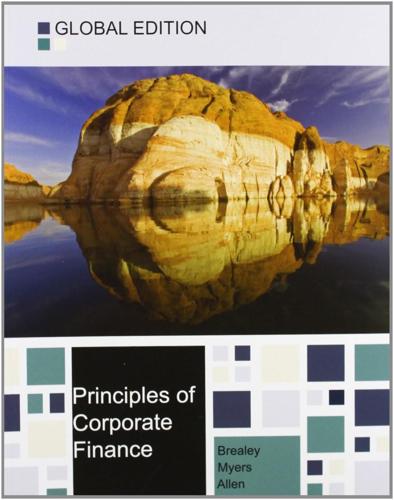
Principles of Corporate Finance
by
Richard A. Brealey
,
Stewart C. Myers
and
Franklin Allen
Published 15 Feb 2014
The general partners get a management fee, usually 1% or 2% of capital committed,24 plus a carried interest in 20% of any profits earned by the partnership. In other words, the limited partners get paid off first, but then get only 80% of any further returns. The general partners therefore have a call option on 20% of the partnership’s total future payoff, with an exercise price set by the limited partners’ investment.25 You can see some of the advantages of private-equity partnerships: • Carried interest gives the general partners plenty of upside. They are strongly motivated to earn back the limited partners’ investment and deliver a profit. • Carried interest, because it is a call option, gives the general partners incentives to take risks.
…
BEYOND THE PAGE ● ● ● ● ● U.S. venture capital investment brealey.mhhe.com/c15 Most venture capital funds are organized as limited private partnerships with a fixed life of about 10 years. Pension funds and other investors are the limited partners. The management company, which is the general partner, is responsible for making and overseeing the investments, and in return receives a fixed fee and a share of the profits, called the carried interest.5 You will find that these venture capital partnerships are often lumped together with similar partnerships that provide funds for companies in distress or that buy out whole companies or divisions of public companies and then take them private. The general term for these activities is private equity investing.
…
Total value of company after issue. d. Total number of shares after issue. e. Stock price after the issue. f. Price of the right to buy one new share. INTERMEDIATE 8. Definitions Here is a further vocabulary quiz. Briefly explain each of the following: a. Zero-stage vs. first- or second-stage financing. b. Carried interest. c. Rights issue. d. Road show. e. Best-efforts offer. f. Qualified institutional buyer. g. Blue-sky laws. h. Greenshoe option. 9. Venture capital a. “A signal is credible only if it is costly.” Explain why management’s willingness to invest in Marvin’s equity was a credible signal. Was its willingness to accept only part of the venture capital that would eventually be needed also a credible signal?
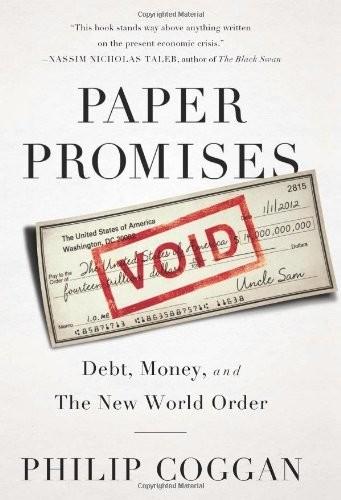
Paper Promises
by
Philip Coggan
Published 1 Dec 2011
The general partners (those who run the fund) will earn their cut in two ways. First, they will take an annual management fee, which may be as much as 2 per cent of the funds invested. This fee is designed to cover the managers’ running costs. Secondly, they will take a performance fee, known as ‘carried interest’, when the assets are sold, often 20 per cent of all profits after an agreed hurdle return has been reached. It is this carried interest that has made private equity fund managers rich. And it has also aroused plenty of controversy, given that it is taxed in many jurisdictions as a capital gain, rather than as income. Since capital gains usually bear a lower tax rate, this results in the anomalous situation where private equity managers are taxed at a lower rate than their office cleaners, as one financier memorably described it.
…
Index AAA Status of US Adams, Douglas Adams, John Addison, Lord Adenauer, Konrad adjustable rate mortgages adulterating coins affluent society Afghanistan ageing populations agrarian revolution Ahamed, Liaquat AIG air miles Alaska Amazon.com Angell, Norman Anglo Irish Bank annuities Argentina Aristophanes Arkansas Asian crisis of 1997 – 8 asset prices assignats Athens Austen, Jane austerity Austria Austrian school Austro-Hungarian empire Aztecs B&Q baby boomers Babylon Bagehot, Walter bailouts balanced budget Baldwin II, King of Jerusalem Balfour, Arthur Bancor Bank for International Settlements bank notes Bank of England bank reserves bank runs bankruptcy codes Banque Generale Barclays Capital Baring, Peter Baring Brothers Barnes & Noble barter Basle Accords Bastiat, Frederic BCA Research BCCI bear markets Bear Stearns Beaverbrook, Lord Belgium Belloc, Hillaire Benn, Tony Benn, William Wedgwood Bernanke, Ben Bernholz, Peter bezant Big Bang Big Mac index bills of exchange bimetallism biofuels Bismarck, Otto von Black Death Black Monday black swan Blackstone Blair, Tony Blum, Léon BMW Bodencreditanstalt Bohemia Bolsheviks Bonnet, Georges Bootle, Roger Brady, Nicholas Brady bonds Brazil Bretton Woods system Brodsky, Paul Brooke, Rupert Brown, Gordon Bruning, Heinrich Brutus Bryan, William Jennings bubbles budget deficits budget surplus building societies Buiter, Willem Bundesbank Burns, Arthur Bush, George W. Business Week Butler, Eamonn Calder, Lendol California Callaghan, Jim Calvin, John Canada Canadian Tar Sands capital controls capital economics capital flows capital ratios carried interest carry trade Carville, James Cassano, Joseph Cato Institute Cayne, Jimmy CDU Party ‘Celtic tiger’ central bank reserves Cesarino, Filippo ‘Chapter’ Charlemagne Charles I, King of England cheques/checks chief executive pay Chile China Churchill, Winston civil war (English) civil war (US) Citigroup clearing union Clientilism Clinton, Bill CNBC collateralized debt obligations commerical banks commercial property commodity prices Compagnie D’Occident comparative advantage conduits confederacy Congdon, Tim Congress, US Connally, John Conservative Party Consols Constantine, Emperor of Rome consumer price inflation continental bonds convergence trade convertibility of gold suspended Coolidge, Calvin copper Cottarelli, Carlo Council of Nicea Cowen, Brian cowrie shells Credit Anstalt credit cards credit crisis of 2007 – 8 credit crunch credit default swaps ‘cross of gold’ speech Cunliffe committee Currency Board currency wars Dante Alighieri David Copperfield Davies, Glyn debasing the currency debit cards debt ceiling debt clock debt deflation spiral debt trap debtors vs creditors, battle defaults defined contribution pension deflation Defoe, Daniel Delors, Jacques Democratic convention of 1896 Democratic Party Democratic Republic of Congo demographics denarii Denmark deposit insurance depreciation of currencies derivatives Deutsche Bank Deutschmark devaluation Dickens, Charles Dionysius of Syracuse Dodd – Frank bill dollar, US Dow Jones Industrial Average drachma Duke, Elizabeth Dumas, Charles Duncan, Richard Durst, Seymour Dutch Republic East Germany East Indies companies Economist Edward III, King of England Edwards, Albert efficient-market theory Egypt Eichengreen, Barry electronic money embedded energy energy efficiency estate agents Estates General Ethelred the Unready euro eurobonds eurodollar market European Central Bank European Commission European Financial Stability Facility European Monetary System European Union eurozone Exchange Rate Mechanism, European exorbitant privilege farmers Federal Reserve Federal Reserve Bank of Philadelphia Federalist party fertility rate ‘fiat money’ Fiji final salary pension Financial Services Authority Financial Times Finland First Bank of the United States First World War fiscal policy fiscal union Fisher, Irving fixed exchange rates floating currencies florin Florio, Jim Ford, Gerald Ford, Henry Ford Motor Company Foreign & Colonial Trust foreign direct investment foreign exchange reserves Forni, Lorenzo Forsyte Saga France Francis I, King of France Franco-Prussian War Franklin, Benjamin French Revolution Friedman, Milton Fuld, Dick futures markets Galbraith, John Kenneth Galsworthy, John GATT Gaulle, Charles de Geithner, Tim General Electric General Motors general strike of 1926 Genghis Khan Genoa conference George V, King of England Germany gilts Gladstone, William Glass – Steagall Act Gleneagles summit Glorious Revolution GMO Gokhale, Jagadeesh gold gold exchange standard gold pool gold standard Goldman Sachs goldsmiths Goodhart, Charles Goodhart’s Law Goschen, George Gottschalk, Jan government bonds government debt Graham, Frank Granada Grantham, Jeremy Great Compression Great Depression Great Moderation Great Society Greece Greenspan, Alan Gresham, Sir Thomas Gresham’s Law Gross, Bill G7 nations G20 meeting Guinea Habsburgs Haiti Haldane, Andrew Hamilton, Alexander Hammurabi of Babylon Havenstein, Rudolf von Hayek, Friedrich Heavily Indebted Poor Countries initiative hedge funds Henderson, Arthur Henry VIII, King of England Hien Tsung, Chinese emperor Hitler, Adolf Hoar, George Frisbie Hohenzollern monarchy Holy Roman Empire Homer, Sydney Hoover, Herbert House of Representatives houses Hume, David Hussein, Saddam Hutchinson, Thomas Hyde, H.
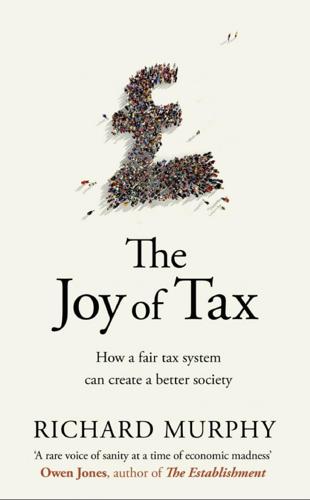
The Joy of Tax
by
Richard Murphy
Published 30 Sep 2015
In the meantime, whoever previously owned the Treasury bond or gilt now has freshly created money instead, made out of thin air, which they can now go and spend. Debt has been cancelled and money has been created and whilst, of course, all money is ultimately a government debt (which is why notes have the phrase ‘I promise to pay the bearer’ on them), it’s also true they are never repaid and don’t carry interest. The government debt that once carried interest can now be interest free. And the deficit that gave rise to the Treasury bond or gilt has now been replaced by newly created money, which just goes to prove that this is exactly what a government does when it runs a deficit – it creates government-made money. If you don’t believe this you wouldn’t be alone.
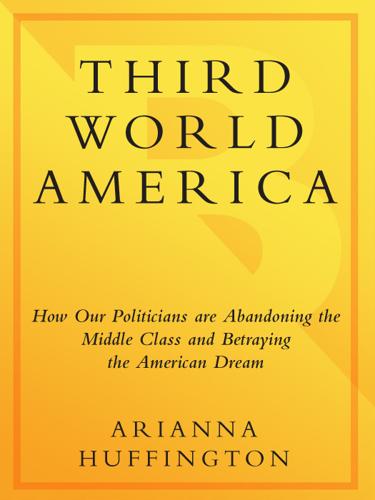
Third World America: How Our Politicians Are Abandoning the Middle Class and Betraying the American Dream
by
Arianna Huffington
Published 7 Sep 2010
Senator Sheldon Whitehouse’s amendment to do just that was voted down 60 to 35.51 So much for “financial stability.” Though I suppose it depends on whose financial stability you care about—the banks’ or the taxpayers’. Or how about payday lending—the largely unregulated advances on a paycheck that can carry interest rates in the triple digits? In Missouri, for example, rates can top 600 percent.52 Yes, you read that right. Not exactly a recipe for “financial stability.” North Carolina’s Kay Hagan offered an amendment that would have clamped down on the $40 billion industry. It was killed without a vote.53 Then there is the Merkley-Levin amendment that would have prohibited banks from making risky proprietary trades—a version of the Volcker Rule.54 It also never even made it to a vote.
…
Treasury.45 And they wouldn’t ban companies using offshore tax havens from receiving government contracts, which is stunning given the hard times we are in and the populist groundswell against the way average Americans are getting the short end of the stick. But the bills would end one of the more egregious examples of the tax policy double standard, finally forcing hedge-fund managers to pay taxes at the same rate as everybody else. As the law stands now, their income is considered “carried interest,” and is accordingly taxed at the capital gains rate of 15 percent.46 According to former labor secretary Robert Reich, in 2009 “the 25 most successful hedge-fund managers earned a billion dollars each.”47 The top earner clocked in at $4 billion. Closing this outrageous loophole would bring in close to $20 billion in revenue—money desperately needed at a time when teachers and nurses and firemen are being laid off all around the country.48 But the two sets of rules—and the clout of corporate lobbyists—leave even commonsense, who-could-argue-with-that proposals in doubt, and leave the middle class shouldering an unfair share of a very taxing burden.
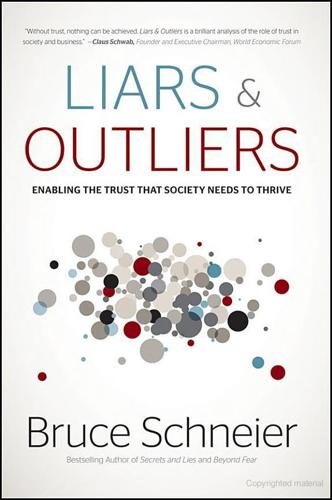
Liars and Outliers: How Security Holds Society Together
by
Bruce Schneier
Published 14 Feb 2012
Feige and Richard Cebula (2011), “America's Underground Economy: Measuring the Size, Growth and Determinants of Income Tax Evasion in the U.S.,” Munich Personal RePEc Archive, MPRA Paper No. 29672 (Jan 2011). blamed income inequality Kim M. Bloomquist (2003), “Tax Evasion, Income Inequality and Opportunity Costs of Compliance,” Paper presented at the 96th Annual Conference of the National Tax Association. carried-interest tax Nicholas Kristof (6 Jul 2011), “Taxes and Billionaires,” New York Times. Laura Saunders (6 Aug 2011), “'Carried Interest' in the Cross Hairs,” Wall Street Journal. investment tax credit Don MacKenzie, Louise Bedsworth, and David Friedman (2005), “Fuel Economy Fraud: Closing the Loopholes That Increase U.S. Oil Dependence,” Union of Concerned Scientists.
…
There are a lot of creative companies figuring out ways to follow the letter of the tax law while completely ignoring the spirit. This is how companies can make billions in profits yet pay little in taxes. And make no mistake, industries, professions, and groups of wealthy people deliberately manipulate the legislative system by lobbying Congress to get special tax exemptions to benefit themselves. One example is the carried-interest tax loophole: the taxation of private equity fund and hedge fund manager compensation at the 15% long-term capital gains tax rate rather than as regular income. Another is the investment tax credit, intended to help building contractors, that people used to subsidize expensive SUVs. There's also tax flight—companies moving profits out of the country to reduce taxes.

Fulfillment: Winning and Losing in One-Click America
by
Alec MacGillis
Published 16 Mar 2021
Left unmentioned in that profile, or in the many other glowing features on his philanthropy, was that Rubenstein had played a role in the depletion of those government resources. He and other private-equity investment managers had for years benefited from a loophole that allowed their compensation for managing other people’s investments to be taxed at the capital gains rate for investment income, rather than at the much higher rate for ordinary income. The “carried interest” loophole saved the wealthiest private-equity executives close to $100 million annually, per person; by conservative estimates, it cost the Treasury $2 billion per year; one expert argued the sum was in fact many times that large. Rubenstein had not only profited enormously from the loophole, but at crucial moments over the years he had helped stave off congressional efforts to close it by working his ties on Capitol Hill.
…
“All of my best decisions have been made with heart and intuition and guts, not analysis,” he said. There was no mention of the fight over the homelessness tax in Seattle three months earlier. There was no mention of the debate over the tax cuts signed into law by President Trump, which had slashed rates for corporations and the wealthiest while leaving the carried-interest loophole untouched. In fact, the word tax would not be uttered once by Bezos or Rubenstein in any context over the course of the seventy-minute interview. Instead, Rubenstein turned toward the topic so many in the ballroom were most eager to hear about. “When you use your intuition to make decisions, where is the intuition leading you now on your second headquarters?”
…
Louis move for Dunbar, Paul Laurence Durkan, Jenny Easter Sunday e-commerce: Amazon control of; Amazon expanding sales in; the Bon-Ton trying; growth of; repercussions of expanding Economic Club economic concentration economic location Edwards, Gary Edwards, Jay Elliott Bay Book Company El Paso, Texas: Amazon Day Expo in; coronavirus pandemic in; grocery near border of; Pencil Cup Office Products in; Sturgis & Co. in; UTEP; see also Gandara, Teresa; Grodin, Sandy El Paso Independent School District El Paso Office Products energy consumption entitlement Erdoğan, Recep Tayyip Etna, Ohio Faber-Castell Facebook: antitrust law investigations involving; The Bon-Ton Family on; coronavirus pandemic benefiting; journalism takeover by; total capital spending soar for failure FBA, see Fulfillment by Amazon FDR, see Roosevelt, Franklin D. federal income tax: carried interest loophole regarding; charitable deduction for avoiding; creation of; philanthropy correlation to financial crash (2008) financial institutions Fiore, Mark Florida Floyd, George food stamps forklifts: Bodani, W. K., work responsibilities driving; deaths from accidents involving; OSHA hazard warning on standup; PIT; Rhoads work responsibilities driving Foroohar, Rana Fowler, Henry France warehouse Fulfillment by Amazon (FBA) fulfillment centers: definition of; tax subsidies for opening Galloway, Scott Gandara, Carlos, Jr.
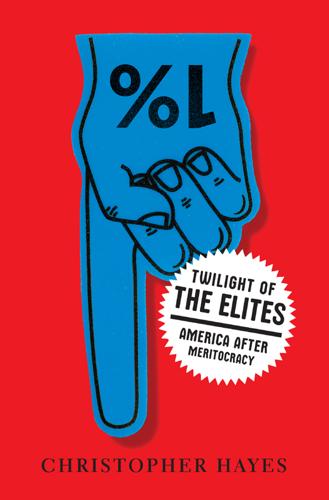
Twilight of the Elites: America After Meritocracy
by
Chris Hayes
Published 11 Jun 2012
The tax cuts passed by Bush and extended by Obama represent a total of $81.5 billion transferred from the state into the hands of the richest 1 percent. Meanwhile, hedge fund managers and their surrogates have deployed millions of dollars to lobbyists to maintain the so-called carried interest loophole, a provision of tax law that allows fund managers to classify much of their income drawn from investing gains as “carried interest” so that it is taxed at the low capital gains rate of 15 percent, rather than the marginal income rate, which would in most cases be more than twice that. It was this wrinkle in the law that helped Mitt Romney, a man worth an estimated quarter of a billion dollars, pay an effective tax rate of just under 14 percent in 2010.

Tailspin: The People and Forces Behind America's Fifty-Year Fall--And Those Fighting to Reverse It
by
Steven Brill
Published 28 May 2018
Those who can often be found at the absolute top of the earnings scale—people who manage hedge funds and private equity and venture funds—enjoy a loophole that allows the money they make by investing money for others (their “carried interest”) to be taxed as capital gains, not earned income, even though they get the money for their work, not as a return on money they have invested. Despite that carried interest loophole (which came from a little noticed but ardently lobbied IRS decision in 1993), Americans who have focused on such issues have been conditioned to believe that capital gains deserve favorable treatment.
…
The imbalance could be measured not just in bodies but also in the unending flow of alternative-language proposals and “white papers” that the lobbyists churned out. One was a glossy “study” full of color graphs and charts, written by consultants on behalf of a group representing private equity funds, defending the “carried interest” tax loophole. The seemingly authoritative graphs and heavily footnoted text purported to explain how taxing those who run these funds at the same rates that everyone else pays on their earned income would be disastrous for the economy, killing millions of jobs and driving away trillions of investment dollars.
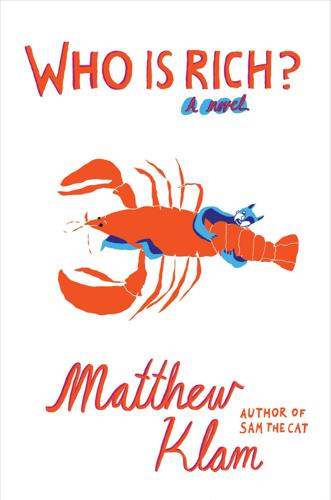
Who Is Rich?
by
Matthew Klam
Published 3 Jul 2017
But I was drawn to his posture of authority; he was conventionally handsome, and I could imagine him mistreating his family in all the ways Amy had mentioned, growling at breakfast, forgetting birthdays, spending Christmas alone in a hotel in Lisbon, falling asleep at dinner. I couldn’t fully assess the debate on carried interest, or whether the companies he’d succeeded in turning around justified the ones he’d accidentally leveraged into bankruptcy, or, more generally, whether bankers should have their intestines wrapped around their throats for wrecking the earth’s economy, but I’d heard from Amy how hard he worked to unlock potential value in undercapitalized industries.
…
She had all the wrong instincts, took her cues from all the wrong people, from a clergy of predators and an old Nazi pope in a crown. Nothing weird about that, nothing wrong with liberation theology in a banking context in a late-capitalist nightmare in the midst of an environmental meltdown. Arcane legislation written in secret by industry cronies on obscure financial practices and windfalls for carried interest had made her rich. She’d been formed by her parents’ immigrant struggle, a smoldering blue-collar rage, and the last two bull markets. Socially progressive, fiscally conservative, except the second part canceled out the first. She backed the NRDC, PETA, NOW, and Planned Parenthood, but also believed in trickle-down and thought lazy people who sat in drum circles on private property complaining about corporate greed weren’t helping.
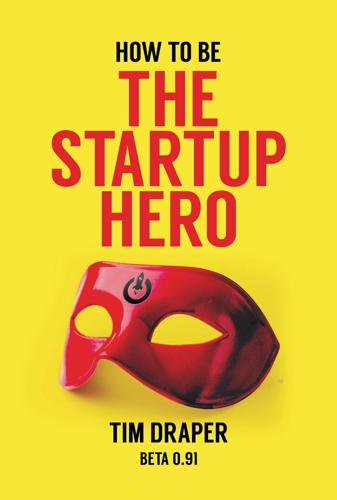
How to Be the Startup Hero: A Guide and Textbook for Entrepreneurs and Aspiring Entrepreneurs
by
Tim Draper
Published 18 Dec 2017
To this day, the venture capital industry suffers in the institutional investor marketplace, where they believe it is not an asset class, but an anomaly, with just a handful of firms that through some alchemy are able to consistently produce strong results. It took years for the venture industry to recover. And when it did, John, Steve and I made some significant money through our profits interest (called “carried interest”) from our success with DFJ ePlanet. With our newfound wealth, we each discussed what we would like to do going forward. We decided to peel off into what we would call the three rockets. John Fisher decided to focus on late-stage investing and created and helped build DFJ Growth with Barry Schuler, former CEO of AOL, and Mark Bailey, who previously worked at KPCB, Symantec and WebMD.
…
You need to be on top of your business model, you need to be open to new ways of thinking, and you need to be enthusiastic and optimistic about your business. A note about venture capitalists. They make their money by generating profits for their investors. Their main source of income is a “carried interest” that only gets large if they take big risks on companies they invest in. They are willing to lose a few of their investments as long as their winners become extraordinarily large. They do that by pushing potentially great companies through their investment committees and finding a few companies that will provide outsized returns for their investors. venture capitalists know only too well that many, in fact most, startups don’t succeed, so venture capitalists have to count on the few that do succeed to become very large so they can make many times their money from investments in the successful companies.
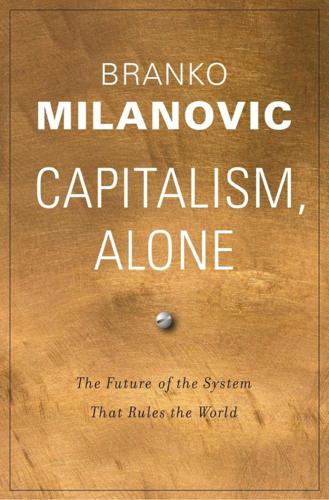
Capitalism, Alone: The Future of the System That Rules the World
by
Branko Milanovic
Published 23 Sep 2019
However, thirty years is a long enough period to even out the consequences of risk, and over the longer term, rich wealth-holders did do better than the middle class. Asset classes held by the rich are also more valuable because they tend to be taxed less than asset classes held by the middle class. Thus capital gains and, in the United States, carried interest (income received by investment fund managers) are, in most cases, taxed at lower rates than interest from savings accounts.26 The rich also enjoy the advantages of size: entry costs (the minimum amount required for investment) to high-yield assets are high and discourage small investors; rich investors can also avail themselves of much better advice about where to invest and, per unit of dollar invested, pay lower fees.
…
The existence in rich countries of an important part of the population without assets is not unique to the United States. Grabka and Westermeier (2014) estimate that 28 percent of German adults have zero or negative net wealth, while the bottom half of the Swedish population has negative wealth (Lundberg and Walderström 2016, table 1). 26. Carried interest is taxed as a capital gain, at a rate of about 20 percent. Interest from savings accounts is taxed as ordinary income, where the top rate is around 40 percent. 27. Bas van Bavel (pers. comm.) gave me the example of BNP Paribas Fortis wealth management fund, which distinguishes between its retail, priority, private banking, and wealth management clients.
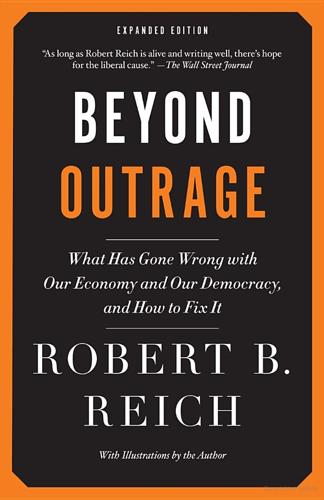
Beyond Outrage: Expanded Edition: What Has Gone Wrong With Our Economy and Our Democracy, and How to Fix It
by
Robert B. Reich
Published 3 Sep 2012
That’s because so much of the income of the super-rich is classified as capital gains, which, at 15 percent, creates a loophole large enough for the super-rich to drive their Ferraris through. Well-heeled tax lawyers and accountants are kept busy year-round figuring out how to make the earnings of their clients look like capital gains. Congress still hasn’t closed the “carried interest” loophole that allows mutual-fund and private-equity managers to treat their incomes as capital gains. Great wealth creates opportunities for ever greater tax loopholes. In 2010, eighteen thousand American households earning more than half a million dollars paid no income taxes at all. The estate tax (which affects only the top 2 percent) has also been slashed.
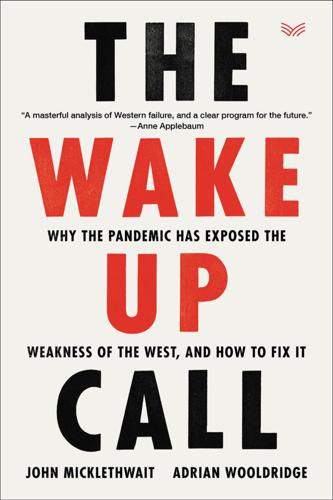
The Wake-Up Call: Why the Pandemic Has Exposed the Weakness of the West, and How to Fix It
by
John Micklethwait
and
Adrian Wooldridge
Published 1 Sep 2020
The lobbyists’ most seductive gift is not an all-expenses-paid trip but a supply of briefing documents that help an overworked politician to stay on top of the news and cope with the tsunami of words that washes over their desks. Much of the lobbyists’ energy goes into protecting arcane pieces of legislation that matter enormously to one group. The “carried interest” tax break that gives private equity an advantage over other ways of running a company is always due to be scrapped in each tax reform package, but mysteriously never is. Back in 1920, the US Congress, ruminating on the First World War, passed the Merchant Marine Act, decreeing that all goods being transported from one American port to another must be carried by US ships owned by US citizens and operated by US crews.

The People vs. Democracy: Why Our Freedom Is in Danger and How to Save It
by
Yascha Mounk
Published 15 Feb 2018
According to Oxfam, for example, the fifty largest American companies have, by perfectly legal means, shifted over $1 trillion to offshore tax havens, costing the US government about $111 billion in lost tax revenue.21 Rich individuals are taxed in a similarly lax manner. One reason why some billionaires pay a lower effective tax rate than their secretaries, as Warren Buffett has famously lamented, is that politicians continue to give massive handouts to them: the carried-interest deduction, for example, allows hedge fund managers to halve the tax they would ordinarily pay on the bulk of their earnings.22 But another big reason is that rich individuals have been just as adept at evading the taxman as corporations: as the leak of the Panama Papers demonstrated, vast fortunes are channeled into offshore tax havens every year; though much of this activity is illegal, it rarely results in prosecutions.23 To ensure that both individuals and corporations pay their fair share of taxes, we should therefore be willing to consider what a tax system might look like if it was invented from scratch.
…
Dyreng and Bradley P. Lindsey, “Using Financial Accounting Data to Examine the Effect of Foreign Operations Located in Tax Havens and Other Countries on U.S. Multinational Firms’ Tax Rates,” Journal of Accounting Research 47 (2009): 1283–1316. 22. Michael S. Knoll, “The Taxation of Private Equity Carried Interests: Estimating the Revenue Effects of Taxing Profit Interests as Ordinary Income,” William and Mary Law Review 50, no. 1 (2008): 115–161. On the “Buffett Rule,” see Warren E. Buffett, “Stop Coddling the Super-Rich,” New York Times, August 14, 2011, http://www.nytimes.com/2011/08/15/opinion/stop-coddling-the-super-rich.html; and Chris Isadore, “Buffett Says He’s Still Paying Lower Tax Rate than His Secretary,” CNN Money, March 4, 2013, http://money.cnn.com/2013/03/04/news/economy/buffett-secretary-taxes/index.html. 23.
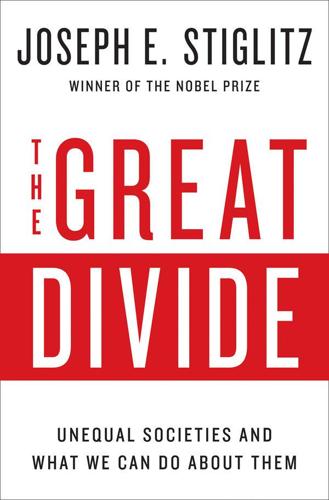
The Great Divide: Unequal Societies and What We Can Do About Them
by
Joseph E. Stiglitz
Published 15 Mar 2015
It is estimated that these kinds of special tax provisions amount to some $123 billion a year, and that the price tag for offshore tax loopholes is not far behind. Eliminating these provisions alone would go a long way toward meeting deficit-reduction targets called for by fiscal conservatives who worry about the size of the public debt. Yet another source of unfairness is the tax treatment on so-called carried interest. Some Wall Street financiers are able to pay taxes at lower capital-gains tax rates on income that comes from managing assets for private equity funds or hedge funds. But why should managing financial assets be treated any differently from managing people, or making discoveries? Of course, those in finance say they are essential.
…
Of course, those in finance say they are essential. But so are doctors, lawyers, teachers, and everyone else who contributes to making our complex society work. They say they are necessary for job creation. But in fact, many of the private equity firms that have excelled in exploiting the carried interest loophole are actually job destroyers; they excel in restructuring firms to “save” on labor costs, often by moving jobs abroad. Economists often eschew the word “fair”—fairness, like beauty, is in the eye of the beholder. But the unfairness of the American tax system has gotten so great that it’s dishonest to apply any other label to it.

Investing Amid Low Expected Returns: Making the Most When Markets Offer the Least
by
Antti Ilmanen
Published 24 Feb 2022
Ruff (2007) and Ilmanen-Chandra-McQuinn (2019) assume a zero real income growth trend. 9 It is not straightforward to translate into one all-in fee the typical diverse PE fund fees: 2% management fee, 20% performance fee (“carried interest”), a hurdle rate with waterfall provisions, and additional portfolio company fees. Phalippou-Gottschalg (2009) estimated all fees to amount to 6% per year. More recently, CEM Benchmarking surveyed large institutional investors, and found total fees to be 5.7% p.a. comprising 2.7% in management fees, 1.9% in carried interest (performance fee), and 1.2% for other fees, including net portfolio company fees (see Doskeland-Stromberg (2018)). Coinvestments and direct investments can have clearly lower fees, but the deals may suffer from selection bias (the “lemons” problem), and Ivashina-Lerner (2019) find no higher net returns to end-investors from such arrangements than from the more costly PE funds. 10 See Ilmanen-Chandra-McQuinn (2020).
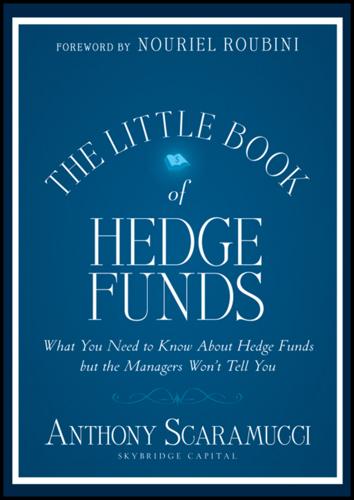
The Little Book of Hedge Funds
by
Anthony Scaramucci
Published 30 Apr 2012
And through it all, hedge funds will remain the alternative investment that not only makes money, but perhaps more important, rationalizes the irrational market by flattening out the kinks in the global market. In the Words of a Hedge Fund Legend . . . Barton M. Biggs, Managing Partner, Traxis Partners 1. How would you define a hedge fund? A hedge fund is a pool of money run by a small number of cocky, arrogant souls who charge outrageous fees including a carried interest and expect to shoot the lights out. 2. How or why did you get started in the industry? I began running a fund for Alfred Jones and the first hedge fund A.W. Jones & Co. back in 1964 when I was an analyst at E.F. Hutton & Co. 3. What hedge fund strategies do you use? I am a macro hedge fund manager and am inclined to concentrate on financial assets which I consider to be my circle of competence, in other words I don’t dabble in commodities and currencies. 4.
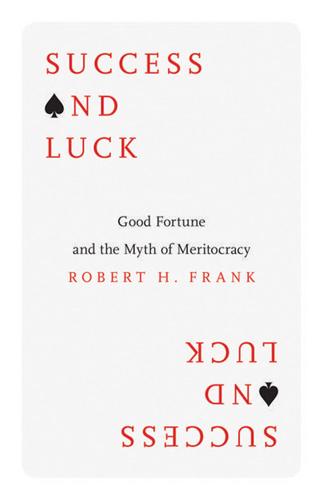
Success and Luck: Good Fortune and the Myth of Meritocracy
by
Robert H. Frank
Published 31 Mar 2016
But, to hear him tell it, he’s beset by a meddlesome, tax-happy government and a whiny, envious populace. He recently grumbled that the U.S. middle class has taken to “blaming wealthy people” for its problems. Previously, he has said that it might be good to raise income taxes on the poor so they had “skin in the game,” and that proposals to repeal the carried-interest tax loophole—from which he personally benefits—were akin to the German invasion of Poland.19 Surowiecki went on to note that other wealthy executives have been voicing similar complaints. The venture capitalist Tom Perkins and the Home Depot cofounder Kenneth Langone, for example, each recently likened populist criticism of the wealthy to the Nazis’ attacks on the Jews.

The Finance Curse: How Global Finance Is Making Us All Poorer
by
Nicholas Shaxson
Published 10 Oct 2018
Let’s say a private equity firm buys a successful pharma company and generates huge internal profits, whether from creating an even better pharma company or from debt-fuelled looting. The GPs’ first trick is the famous 2 and 20 formula: they take 2 per cent of the value of invested funds annually as management fees, plus the so-called carried interest, which is typically 20 per cent of any internal profits generated, though often only after the fund has attained a ‘hurdle rate’ of profit. That formula may sound reasonable, but in the real world the mathematics rips surprisingly large chunks of the profits away from the outside investors and channels them into the moguls’ pockets, especially when the portfolio company fares badly.22 Below that exists another world of chicanery of hidden fees, usually at the level of the portfolio companies the PE firms buy.
…
Normal companies typically use something like three times as much debt as equity (the owners’ own money), while with private equity it’s roughly the other way around. See Appelbaum and Batt, Private Equity at Work, p.77, which also has the 40 per cent figure for enterprise value. On the tax changes in the UK, see ‘Private equity execs face bigger tax on “carried interest”’, Financial Times, 31 March 2016. Research shows that private equity firms are significantly more aggressive in using tax havens and other schemes to escape paying tax, and this is particularly true of the larger firms, which can afford the armies of lawyers and accountants necessary to design the complex schemes that really shake the taxman off.
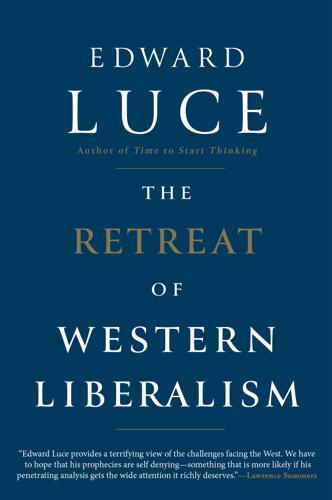
The Retreat of Western Liberalism
by
Edward Luce
Published 20 Apr 2017
But whatever your remedies to the crisis of liberal democracy, nothing much is likely to happen unless the West’s elites understand the enormity of what they face. If only out of self-preservation, the rich need to emerge from their postmodern Versailles. At the moment they seem busier shoring up its fortifications. In 2009, the Obama administration proposed a modest taxation of carried interest that would have treated a small slice of capital earnings as income. This would have taken a tiny bite out of the incomes of the largest hedge-fund and private-equity tycoons. As Warren Buffet said, ‘It is not fair that I am paying lower taxes than my secretary.’ Wall Street rose up in opposition.
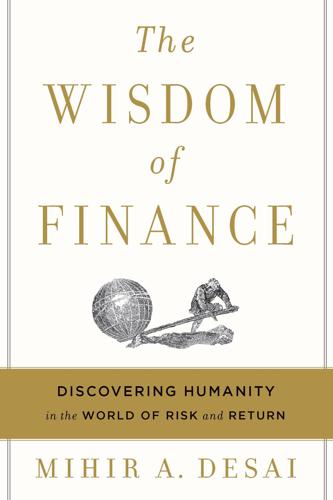
The Wisdom of Finance: Discovering Humanity in the World of Risk and Return
by
Mihir Desai
Published 22 May 2017
The massive growth of the alternative assets industry over the last three decades is an underappreciated development in our capital markets. That development is predicated on the idea that some investors—such as hedge funds, private equity funds, and venture capital funds—are truly skilled and can generate alpha. That alpha generation serves as the foundation for their fees. Their fee structures—so-called carried interest—are a function of their performance, so, the logic goes, they only get paid when they do well. Of course, the reality is not quite so benign. These investors have been shown to not outperform reasonable benchmarks on average, and the evidence of skill for most of them is fleeting—except for, perhaps, funds in the top decile of those funds.
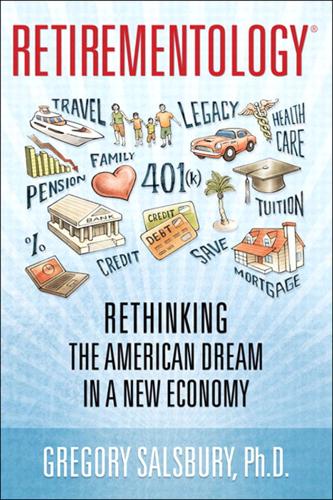
Retirementology: Rethinking the American Dream in a New Economy
by
Gregory Brandon Salsbury
Published 15 Mar 2010
The top 20% of households paid 81.2% of all taxes during the presidency of Bill Clinton, and in 2006, these households paid a record 86.3% of all taxes.63 And that trend is only going to continue since, according to President Obama’s 2010 federal budget, increased taxes on “the rich” will equal 0.3% of GDP—echoes of Herbert Hoover’s tax hikes that put the “Great” into “Great Depression.”64 Or of California today. What about the wealthy? Presently, the goal in Washington is to take people who earn $250,000 a year or more in income, approximately 2.6 million Americans, and collect $636.7 billion in taxes from them.65 Additionally, “carried interest” from a hedge fund, a venture capital firm, a private equity firm, or some other partnership presently taxed at 15% may soon be taxed at 39.6%.66 In 1984, a tax on retirees’ Social Security benefits was introduced, which made up to 50% of a beneficiary’s Social Security check taxable if the person’s other income—retirement plan payout, investment income, and so on—exceeded $25,000 annually ($32,000 for couples).

The Price of Time: The Real Story of Interest
by
Edward Chancellor
Published 15 Aug 2022
It was something like a firmament, endless stars and within each star an endless firmament and within each one further endless … It bordered on mystic perception. It gave him the feeling of being part of an infinite existence. R. K. Narayan, The Financial Expert, 1952 In the beginning was the loan and the loan carried interest. Well, this may have been the case. We don’t know for sure, but it’s now widely believed that the earliest transactions were for credit rather than barter. We do know that the Mesopotamians charged interest on loans before they discovered how to put wheels on carts. Interest is much older than coined money, which only originated in the eighth century BC.
…
Ben Protess and Michael Corkery, ‘Just How Much Do the Top Private Equity Earners Make?’, New York Times, 10 December 2016. Median pay for the buyout barons in 2015 was $138 million, compared with $23 million for top bankers according to the New York Times. Private equity executives were also helped by the fact that they paid a lower tax rate on fees charged as ‘carried interest’. This subsidy was estimated to have been worth $180 billion over the previous decade. 46. Nouriel Roubini, ‘Public Losses for Private Gain’, Guardian, 18 September 2008. 47. See Piketty, Capital, p. 135, and Galbraith, Inequality and Instability, p. 4. 48. Anthony B. Atkinson, Inequality: What Can Be Done?

The Only Game in Town: Central Banks, Instability, and Avoiding the Next Collapse
by
Mohamed A. El-Erian
Published 26 Jan 2016
It is also about using tax and expenditure measures more actively to improve the quality of spending without unduly impacting the incentives that fuel innovation and entrepreneurship. In the United States, for example, this would include—going from the least to the most controversial—closing tax loopholes and cascading exemptions, increasing the taxation of carried interest earned by private equity firms and hedge funds, reforming inheritance taxation, streamlining home mortgage subsidies, and a higher marginal tax rate for the highest-income earners. It would also involve decisive steps to modernize a system of corporate taxation that is littered with anomalies, distortions, and misaligned incentives that undermine rather than promote economic growth—including by encouraging firms to spend a lot of money on “inversions,” that is, the purchase of foreign entities in order to geographically shift and reduce tax burdens while keeping productive operations as is.
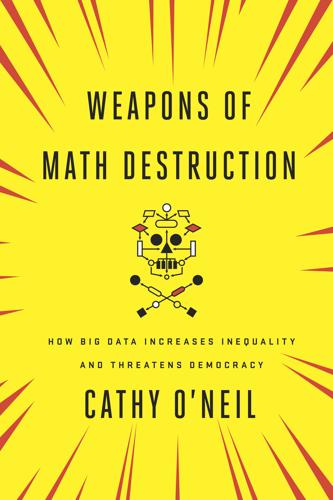
Weapons of Math Destruction: How Big Data Increases Inequality and Threatens Democracy
by
Cathy O'Neil
Published 5 Sep 2016
The human suffering, which had been hidden from view behind numbers, spreadsheets, and risk scores, became palpable. The chatter at Shaw was nervous. After the fall of Lehman Brothers in September of 2008, people discussed the political fallout. Barack Obama looked likely to win the election in November. Would he hammer the industry with new regulations? Raise taxes on carried interest? These people weren’t losing their houses or maxing out their credit cards just to stay afloat. But they found plenty to worry about, just the same. The only choice was to wait it out, let the lobbyists do their work, and see if we’d be allowed to continue as usual. By 2009, it was clear that the lessons of the market collapse had brought no new direction to the world of finance and had instilled no new values.
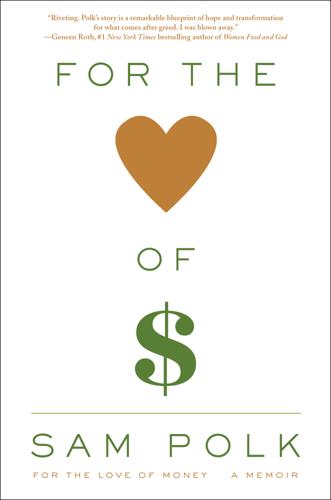
For the Love of Money: A Memoir
by
Sam Polk
Published 18 Jul 2016
Wall Street started to look less like a bunch of smartest-guys-in-the-room and more like a group of men who’d secured a seat in a ring of chairs surrounding a huge pile of money, a pile that was growing not because of their skill, but because that’s what money did. The system was structured—through monetary policy, carried interest deductions, corporate tax breaks, and industry lobbyists—to ensure it. That might not sound like a crushing realization, but for me it was. I knew Wall Street wasn’t about doing something meaningful with your life, but I had seen it as a great coliseum for my young ambitions. Now it looked less like a meritocracy than an oligarchy.
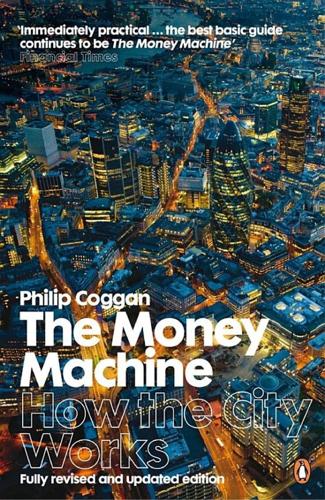
The Money Machine: How the City Works
by
Philip Coggan
Published 1 Jul 2009
SYNDICATED LOANS Having begun with short-term deposits, the Euromarket was quickly adapted to serve the needs of longer-term borrowers by the development of the syndicated loan. This is merely a large, long-term bank loan which a syndicate of banks club together to provide because no one bank wants to commit that much capital to any one borrower. Usually, these loans carry interest rates at a margin relating to LIBOR or EURIBOR, the equivalent measure for the Eurozone. Companies, countries or institutions with a good credit rating can sometimes borrow below LIBOR or even the London Interbank Bid Rate (LIBID), but borrowers whose financial position is not so healthy can expect to pay a considerable margin over LIBOR.
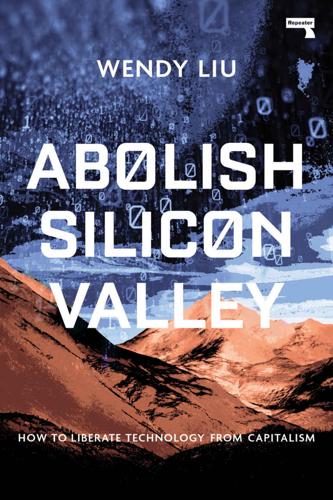
Abolish Silicon Valley: How to Liberate Technology From Capitalism
by
Wendy Liu
Published 22 Mar 2020
I supposed any portfolio of startups would eventually become a mausoleum. That was just how it worked: lots of failures in exchange for a small number of successes. It was a nice system for venture capitalists, who got to swan around in their Teslas and Allbirds and Patagonia vests; they got expense accounts, carried interest, the thrill of being worshipped by hopeful would-be entrepreneurs. What was it like for founders? Your investors could choose to give you some degree of autonomy, but ultimately it was their choice; your life’s work was not truly your own. All that time you could never get back, spent in the pursuit of a foolish cause, governed by forces out of your control.
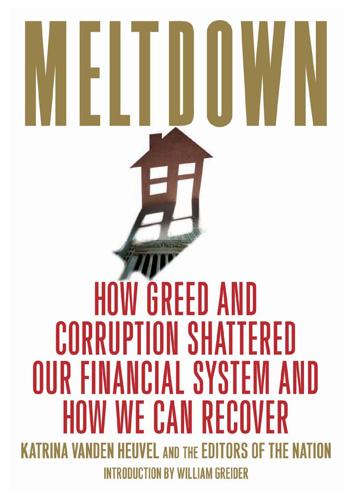
Meltdown: How Greed and Corruption Shattered Our Financial System and How We Can Recover
by
Katrina Vanden Heuvel
and
William Greider
Published 9 Jan 2009
That’s to make sure some money comes back right from the start and that managements cannot keep all the earnings for themselves by reducing accounting profits and paying themselves more. To recapture some of the broader market gains flowing from the injection of public money, one could place a modest new tax on interest, dividends, capital gains. “Carried interest,” the ludicrous special tax break for private equity and hedge funds that not only Republicans but Senator Schumer and other Democratic Congressional leaders continue to defend, should go as part of any political deal on a bailout. It is beyond crazy to ask American workers to subsidize firms that will soon be back trying to break up their firms and throw their rescuers out of work.
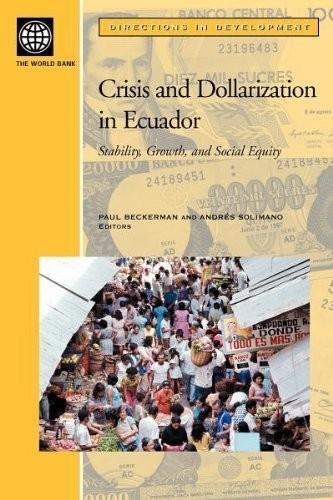
Crisis and Dollarization in Ecuador: Stability, Growth, and Social Equity
by
Paul Ely Beckerman
and
Andrés Solimano
Published 30 Apr 2002
Merchandise imports Interest due 1 2 3 2001 4 114 CRISIS AND DOLLARIZATION IN ECUADOR new commercial-bank loans). Moreover, in November 2000 the banking authorities eliminated a ceiling on fees that banks could change borrowers in lieu of interest, and removed a requirement that banks make provisions on loans carrying interest rates higher than 18 percent. In December 2000 the government transferred US$137 million to the Deposit Insurance Agency to enable it to make payments to insured depositors. In January 2001 the Central Government on-lent funds from the CAF to augment the resources of the bank liquidity fund, and made the Central Bank’s liquidity recycling facility fully operational.

The Trouble With Billionaires
by
Linda McQuaig
Published 1 May 2013
Those who have been most successful at this ploy are private equity, venture capital and hedge fund managers. Typically, the managers of these funds are paid an annual management fee of 2 per cent of the fund’s net assets, plus a 20 per cent performance fee based on the fund’s profits for the year. This performance fee, or ‘carried interest’ as it is sometimes called, can amount to millions of pounds. The managers of these funds have persuaded the government to allow them to classify this performance fee as a capital gain, even though it is simply income earned for a job performed and should be taxed as regular earned income. The ostensible purpose of the lower capital gains rate is to compensate investors for the risk they take in investing their capital.
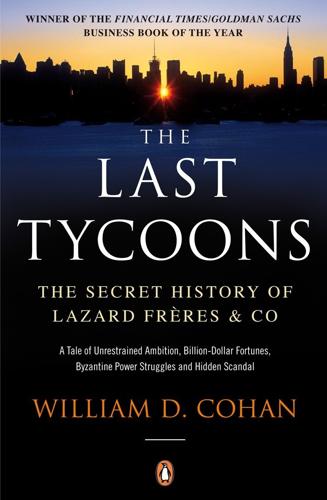
The Last Tycoons: The Secret History of Lazard Frères & Co.
by
William D. Cohan
Published 25 Dec 2015
In total, over its initial twelve-year existence, Corporate Partners invested $1.35 billion in nine companies and received in return $2.99 billion, for a profit before fees and carried interest of $1.64 billion. Private-equity funds are judged on how well their investments perform over time, a calculation known as the internal rate of return, or IRR. Corporate Partners' IRR during its existence was 15 percent, net of fees and carried interest; investors received an annualized return of 15 percent per year. That placed its performance in the top quartile of such funds. BILL CLINTON'S VICTORY in the 1992 presidential election handed Lazard another unexpected problem: a glum and cranky Felix Rohatyn.
…
Steve also negotiated for himself and for Lazard one of the sweetest fee arrangements in capital-raising history. Since some of the Providence fund had been committed at the outset, Lazard was to raise only $175 million. For that work, the firm was to be paid a 1 percent placement fee, or $1.75 million, plus--and highly unusually--one-third of the General Partner's carried interest, or profits. Since the fund was enormously successful--returning to investors four times the amount of money invested--Steve figured the General Partner made $100 million, of which Lazard took around $33 million. But Steve had a side arrangement with Michel that gave him 8.25 percent of the firm's take, amounting to some $2.72 million for Steve alone, leaving the Lazard New York partners with around $30 million.

Griftopia: Bubble Machines, Vampire Squids, and the Long Con That Is Breaking America
by
Matt Taibbi
Published 15 Feb 2010
The administration accepted those proposals, and the Social Security tax rate went from 9.35 percent in 1981 to 15.3 percent by 1990. Two things about this. One, Social Security taxes are very regressive, among other things because they only apply to wage income (if you’re a hedge fund manager or a Wall Street investor and you make all your money in carried interest or capital gains, you don’t pay) and they are also capped, at this writing at around $106,000, meaning that wages above a certain level are not taxed at all. That means that a married couple earning $100,000 total will pay roughly the same amount of Social Security taxes that Lloyd Blankfein or Bill Gates will (if not more, depending on how the latter two structure their compensation).
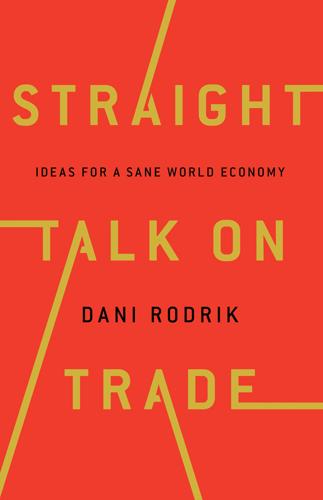
Straight Talk on Trade: Ideas for a Sane World Economy
by
Dani Rodrik
Published 8 Oct 2017
By contrast, today’s super-rich are “moaning moguls,” to use James Surowiecki’s evocative term.27 Exhibit A for Surowiecki is Stephen Schwarzman, the chairman and CEO of the private equity firm the Blackstone Group, whose wealth exceeds $10 billion. Schwarzman acts as if “he’s beset by a meddlesome, tax-happy government and a whiny, envious populace.” He has suggested that “it might be good to raise income taxes on the poor so they had ‘skin in the game,’ and that proposals to repeal the carried-interest tax loophole—from which he personally benefits—were akin to the German invasion of Poland.” Other examples from Surowiecki, “the venture capitalist Tom Perkins and Kenneth Langone, the cofounder of Home Depot, both compared populist attacks on the wealthy to the Nazis’ attacks on the Jews.” Surowiecki thinks that the change in attitudes has much to do with globalization.
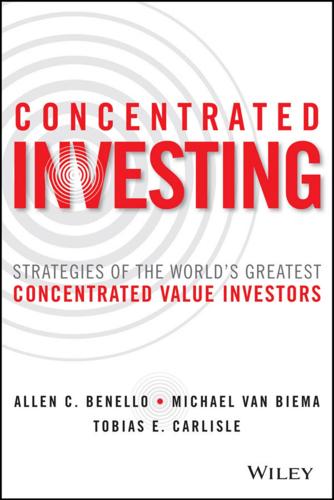
Concentrated Investing
by
Allen C. Benello
Published 7 Dec 2016
Siem sold the rig, which had cost $24.8 million just two years earlier, for $34.5 million. In the two years Siem’s syndicate had owned it, it had remained operating the whole time and generating income for the group. The almost $10 million capital gain represented a fantastic return on the $7 million that Siem’s group invested. Siem, who received a carried interest on the rig, and had also invested, made several million dollars personally. As he had predicted, the drilling market soon collapsed completely, and remained depressed for 10 years, but not before Siem got one more deal done. Diamond M Dragon and Common Brothers In 1981, Siem found the deal that would be key to his foray into the shipping world.

Private Equity: A Memoir
by
Carrie Sun
Published 13 Feb 2024
I had believed in the prestige of Carbon, which, to me, lay not in any zeros after commas but in the moral legitimacy of the enterprise. I ignored the fact that individual portfolio managers at Carbon used individual private jets. I ignored how each of those private jets contributed to climate change and government revenue shortfalls via tax breaks. I ignored the carried interest loophole. I ignored the fact that many middle-class workers paid more in taxes, percentage-wise, than hedge fund managers or private equity execs. I ignored the very real privileges of everyone, including me, working at Carbon, how people treated us differently, how they tripped over one another to make our lives easier: they answered our calls; we jumped the queues; they gave us discounts and freebies and—what killed me—they saved their best behavior for us.

The Corruption of Capitalism: Why Rentiers Thrive and Work Does Not Pay
by
Guy Standing
Published 13 Jul 2016
Mitt Romney, who ran for US President as the Republican candidate in 2012, paid a tax rate of only 14 per cent on his $22 million income in 2010, because most of it came from investments. The US advocacy group Citizens for Tax Justice has calculated that removing this subsidy to capital would raise $533 billion over a decade. Wealthy US hedge fund managers, four of whom paid themselves over $1 billion in 2015, also benefit from having their earnings treated as ‘carried interest’ and taxed at capital gains rates. Another selective tax rate that privileges the rich is the low or zero inheritance tax in many countries. US inheritance tax only kicks in on estates over $5 million. In the UK, the government has raised the threshold for such tax to £1 million for wealthy, home-owning couples (and there are ways of minimising the tax through trusts and the like).
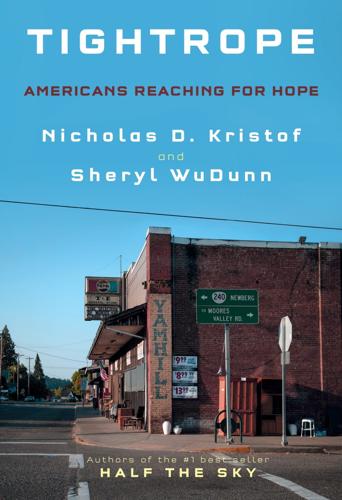
Tightrope: Americans Reaching for Hope
by
Nicholas D. Kristof
and
Sheryl Wudunn
Published 14 Jan 2020
Facebook, Google and Amazon soared partly because they were built by hard-driving, brilliant visionaries, and partly because those visionaries were white men who had access to capital. The old feudal aristocracy kept its wealth through a combination of rules and norms, and so does today’s new aristocracy. There are the subsidies to the wealthy, like the carried interest tax loophole or the mortgage subsidy for yachts. By some calculations, corporate subsidies, credits and loopholes are 50 percent higher than entitlements to the poor (not including Medicare and Medicaid). Some of the other subsidies are outlandish: put a few goats on your golf course and you can classify it as farmland, as President Trump did, and save large sums in taxes.

Winners Take All: The Elite Charade of Changing the World
by
Anand Giridharadas
Published 27 Aug 2018
They include the corporate raiders who, seeking to raise profits by cutting costs, have helped to do away with stable employment. They are the gentrifiers who have pushed real estate prices through the roof and made it harder for families like those of the young dancers to maintain a livelihood in the city. They are the beneficiaries of tax laws that give carried interest a major break and help to keep the public coffers low and the schools attended by the city’s poor underfunded, thus driving them into the streets and occasionally, when they are lucky, into the charity’s arms. But these men have been generous, and in exchange for their generosity, these issues will not come up.

The Four Pillars of Investing: Lessons for Building a Winning Portfolio
by
William J. Bernstein
Published 26 Apr 2002
(You can reach Treasury Direct at 1-800-722-2678 and www.publicdebt.treas.gov/sec/sectrdir.htm.) Even if you are purchasing a Treasury at auction through a brokerage firm, the fee is nominal—typically about $25. For a five-year note worth $10,000, this equals an annual expense of 0.05%. • High-quality corporate bonds and commercial paper. Corporates not only carry interest rate risk, but also credit risk. Even the highest-rated companies occasionally default. How often does this happen? Very rarely. According to bond-rating service Moody’s, since 1920 the rate of default for the highest-rated AAA bonds was zero, 0.04% per year for AA-rated, 0.09% for A-rated, and 0.25% for BBB-rated.
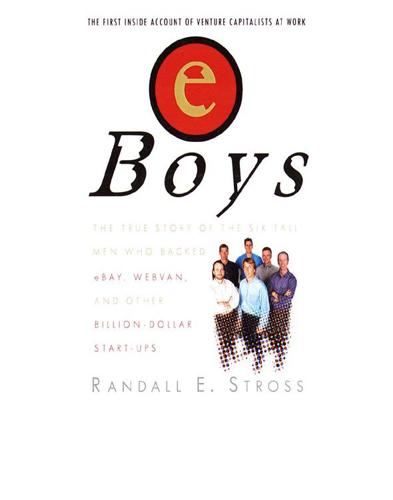
eBoys
by
Randall E. Stross
Published 30 Oct 2008
In fact, they had the best of all worlds: a claim on a percentage of future investment gains, as well as a steady, guaranteed income that the limited partners paid as an annual management fee, usually 2 percent of all capital under management. The fee income, however, was pocket change. The real money came in the form of “the carried interest,” a quaint, confusing term that was shortened colloquially to “the carry,” which was 20 to 25 percent of the profits to be made investing Other People’s Money. If a starting kitty of $500 million became a portfolio of investments worth $5 billion, then a 20 percent carry would mean the venture guys would get, after repaying the original $500 million, a fifth of the $4.5 billion in profits, or $900 million, to divide among themselves, and their limited partners would get the remainder.
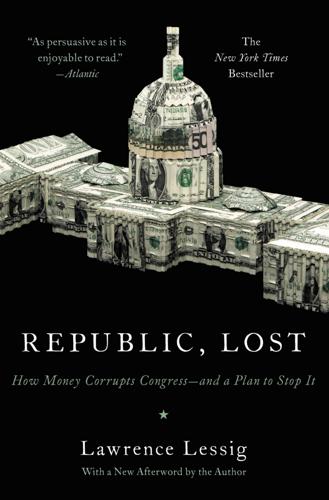
Republic, Lost: How Money Corrupts Congress--And a Plan to Stop It
by
Lawrence Lessig
Published 4 Oct 2011
People working within this system can thus believe—and do believe—that they’re doing nothing wrong by going along with how things work. Sometimes this going-along produces benefits that seem venally corrupt. Because of a loophole in the tax system (one that has existed since the 1960s), managers of hedge funds don’t pay ordinary income tax on the money they earn from hedge funds. Instead, their “carried interest” gets taxed at 15 percent.32 Thus, though the top ten hedge fund managers in 2009 made, on average, $1.87 billion, they paid a lower tax rate on that income than their secretaries.33 Obama promised to change this. But that change was blocked. Its very hard not to understand the very richest in our society enjoying the same tax rate as individuals earning between $8,000 and $34,000 as anything other than a kind of venal corruption.
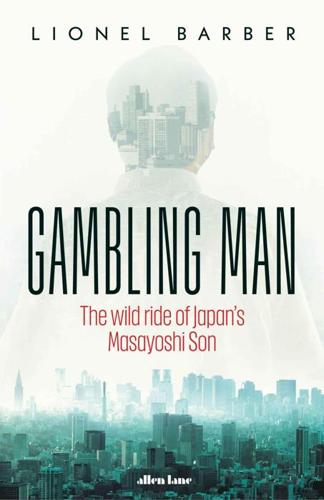
Gambling Man
by
Lionel Barber
Published 3 Oct 2024
The Vision Fund operated more like an investment bank trading day-to-day securities than a venture fund employing ‘patient capital’ and nurturing long-term growth. The cut-throat culture derived partly from Rajeev Misra; but it was also embedded in the terms of remuneration, which Misra constantly complained about. Most VC firms offer partners and fund managers ‘carried interest’, also known as ‘carry’. This is a performance fee in the form of a portion of future profits from an investment, usually amounting to around 20 per cent. But Masa ruled that ‘carry’ was too expensive and anyway unwarranted, given that he’d raised the bulk of the Vision Fund himself. As a result, Vision Fund managers were remunerated according to their own deals rather than overall team performance – a recipe for rapaciousness and internal conflict.

Makers and Takers: The Rise of Finance and the Fall of American Business
by
Rana Foroohar
Published 16 May 2016
Warren Buffett famously took on this issue in 2011 in a New York Times piece, noting that while the taxes he paid the previous year amounted to 17.4 percent of his income—or $6,938,744 total—the tax burden on other people in his office averaged 36 percent.32 (For his assistant Debbie Bosanek it was 35.8 percent.)33 That’s because Buffett makes money from things like “carried interest” on investments, capital gains from selling stocks, and so on. Like most billionaires and many millionaires, he declares very little “earned” income but a lot of asset wealth gains. As Buffett says, “these and other blessings are showered upon us [meaning, the rich] much as if we were spotted owls or some other endangered species.
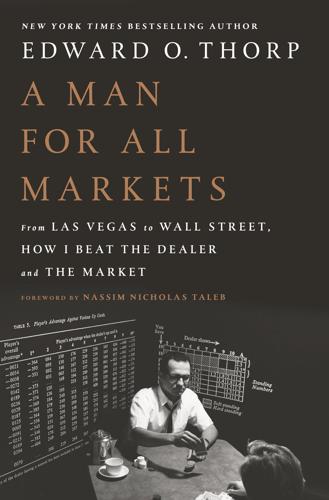
A Man for All Markets
by
Edward O. Thorp
Published 15 Nov 2016
protects my neighbors Vaccination is a positive externality as it protects others from contracting a disease from the recipient. collection of insights Poor Charlie’s Almanack: The Wit and Wisdom of Charles T. Munger, Foreward by Warren Buffett, edited by Peter Kaufman. Expanded third edition, 2008. much of their income Read the evolving discussion of the taxation of so-called carried interest in Wikipedia and elsewhere on the Internet. The 2012 Republican presidential candidate, Mitt Romney, was a substantial beneficiary. of national income The top 1 percent have about a third of taxable income, the next 9 percent have another third, and the bottom 90 percent have the remaining third. 20 percent or so To get a simplistic feel for the numbers, government received $3.25 trillion in income in 2015 and GNP was $18 trillion.

Stocks for the Long Run 5/E: the Definitive Guide to Financial Market Returns & Long-Term Investment Strategies
by
Jeremy Siegel
Published 7 Jan 2014
This is because investment firms had sold off virtually all their risky technology holdings to investors before the dot-com bubble burst. In sharp contrast, at the peak of the real estate market, Wall Street was up to its ears in housing-related debt. As noted earlier, in a declining interest rate environment, investors were hungry for yield, and these mortgage-based securities carried interest rates that were higher than comparably rated corporate and government debt. This tempted investment banks, such as Bear Stearns, to sell these bonds to investors with the promise of higher yield with comparable safety.24 Although many investment banks held these bonds for their own account, their holdings of subprime debt grew substantially when they were forced to take back the faltering subprime funds they sold to investors because of complaints that investors were not fully informed of their risks.25 Risks to the financial system were compounded when AIG, the world’s largest insurance company, offered to insure hundreds of billions of dollars of these mortgages against default through an instrument called the credit default swap.
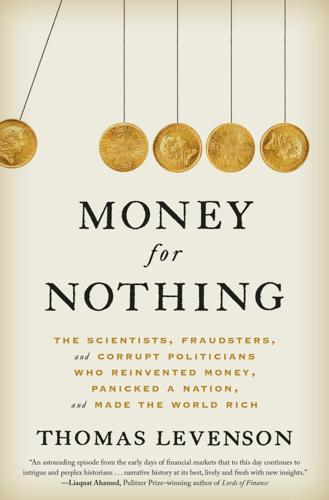
Money for Nothing
by
Thomas Levenson
Published 18 Aug 2020
The tangle of official obligations stretched back at least forty years to the bad behavior of the Stuart king Charles II, whose “stop” of the payments from the Exchequer lingered as an obligation of more than half a million pounds still due from the Treasury. The long-term loans from the 1690s remained on the books. That money, the price of the Nine Years’ War, had grown into over £12 million due, carrying interest rates of up to 10 percent over terms that extended for up to a hundred years. These were the “irredeemables,” so called because they could not simply be paid off during their run. More than £11 million more in long-term debt had piled on during the Tory years—much of it in redeemable lottery loans that could be paid off whenever the government could find the funds.
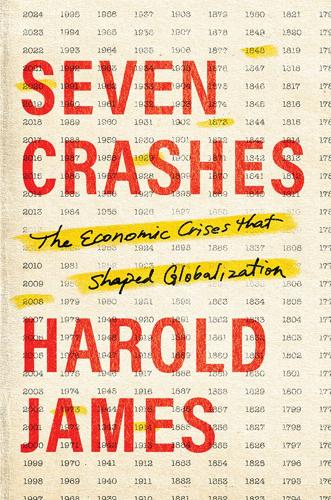
Seven Crashes: The Economic Crises That Shaped Globalization
by
Harold James
Published 15 Jan 2023
Saying that it did not matter what money measure was adopted looked like a hand-waving exercise: and when central banks tried to do something like monetary targeting in the early 1980s, they were wracked with contentious divisions over precisely which money measure should be adopted.85 The monetary aggregates behaved in different ways, and there was a striking amount of financial innovation, such as interest-bearing checking accounts (or NOW accounts in U.S. parlance), which seemed to violate the traditional assumption that money did not carry interest. Friedman had always believed that empirical observations could be used to generate better policy rules. The practical recommendation of the Presidential Address followed directly from the analysis in the Monetary History of the United States that there was a very clear long-term historical relationship between changes in income and changes in the money stock.
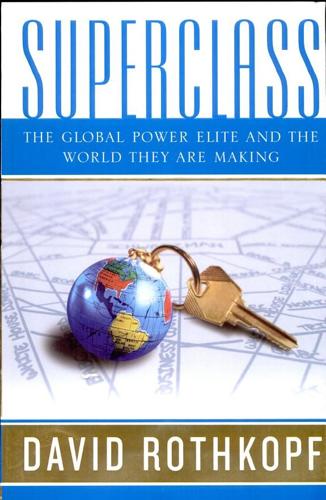
Superclass: The Global Power Elite and the World They Are Making
by
David Rothkopf
Published 18 Mar 2008
This, then, is among the forces that fill the void created by the ignorance of the American public and many of its elected representatives. And it produces direct results, one of which is legislation that is overly favorable to financial institutions. To choose one example that was controversial at the time of this book’s writing, private equity firms managed to persuade Congress to treat their “carried interest” in companies as capital gains rather than ordinary income, resulting in a substantial tax break (15 percent instead of up to 45 percent). Many, even a few financial leaders such as Warren Buffett, viewed this as so egregiously inequitable that an opposition movement has formed against it. Because of America’s international reach and power, the revolving door to the financial community is a phenomenon with global consequences.
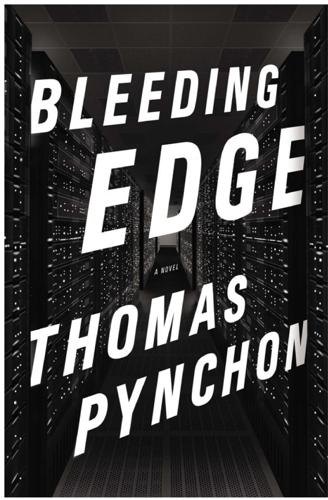
Bleeding Edge: A Novel
by
Thomas Pynchon
Published 16 Sep 2013
Well, the party, I fear, has fallen on evil days. This generation—it’s almost a religious thing now. The millennium, the end days, no need to be responsible anymore to the future. A burden has been lifted from them. The Baby Jesus is managing the portfolio of earthly affairs, and nobody begrudges Him the carried interest . . .” Suddenly, and from the cookie’s point of view, rudely, chomping into it and scattering crumbs. “Sure you won’t have one, they’re quite . . . No? All right, thanks, don’t mind if I . . .” Grabbing another, two or three actually, “I just spoke with some people. A most puzzling conversation, I have to say.

Corporate Finance: Theory and Practice
by
Pierre Vernimmen
,
Pascal Quiry
,
Maurizio Dallocchio
,
Yann le Fur
and
Antonio Salvi
Published 16 Oct 2017
The management company, in other words the partners of the LBO funds, is paid on the basis of a percentage of the funds invested (c. 2% of invested funds) and a percentage of the capital gains made (often close to 20% of the capital gain) above a minimum rate of return of 6% to 8% (the hurdle rate), known as carried interest. Some funds decide to list their shares on the stock market, like Blackstone did in 2007,5 while others such as 3i and Wendel are listed for historical reasons. 4. The lenders For smaller transactions (less than €10m), there is a single bank lender, often the target company’s main bank or a small group of its usual bankers (club deal).
…
cancellation of shares cap, interest rate options CAPEX see capital expenditure analysis capex facility capital cost of “frozen” subdividing warrants raising weighted average cost method see also debt capital; shareholder equity; working capital capital asset pricing model (CAPM) capital charge, value creation capital decrease see capital reduction capital employed book value difference definition extreme volatility of goodwill gross growth rate market value policy put option on ratio to operating profit restating items of return on risk of solvency terminal value based on value of very high risk of see also operating assets capital-employed analysis, balance sheet capital expenditure analysis (CAPEX) capital expenditures calculating cash flow and financial analysis purpose of stability principle wealth creation working capital yield to maturity capital gains capital gains tax capital increases cost defensive measures definition EPS decrease methods share issue start-ups capital leases capital losses, assets capital market line CAPM relationship risk-free assets and capital markets capital payments capital rationing, PVI and capital reduction choosing method exceptional dividends capital structure change as signal choosing of competitors design of leverage effect modern theory of parameters use perfect capital markets policy capitalisation discounting factors real estate acquisition shares capitalisation factor CAPM see capital asset pricing model captive insurance carried interest, LBO funds carrybacks carryforwards, tax loss carrying value, consolidated accounts carve-outs cascade structure cash balance sheet buying movements in as profitability indicator providing shareholders with recession conditions wealth distinction cash acquisition cash assets “cash at hand” cash balances centralisation of cost of capital investing cash budgeting cash certificates cash culture cash disbursements from expenditure cash equivalents cash flow accounting for analysis of earnings bonds business plan horizon centralisation of classifying company’s company finance defining discounting earnings to effective annual rate equilibrium between forecasting horizons future investment generation negotiation NPV calculation operating activities option pricing present value of pros and cons of approach reason in terms of reinvesting rights/commitments share issue start-ups types value of security see also free cash flow; funds from operations “cash flow fade” method cash flow hedges cash flow return on investment (CFROI) cash flow statement financial analysis income statement differences operating activities and cash flow value at maturity net asset value cash generating units (CGUs) cash inflows, shareholders’ equity cash management basic concepts optimising based on value dates within groups cash mutual funds cash offers cash payment, mergers and acquisitions cash pooling cash ratio, company finance cash return to shareholders cash surpluses, account balancing cat bonds CBs see convertible bonds CDO see collateralised debt obligation CDs see certificates of deposit CDS see credit default swap central banks centralised cash management CEO see chief executive officer certainty equivalent, investment analysis certificates of deposit (CDs) CFO see chief financial officer CFROI see cash flow return on investment CGUs see cash generating units chairman of the board role change-of-control provisions changes in working capital chaotic functions characteristic line, financial securities charges see cost(s) chartists cheque payments chief executive officer (CEO) chief financial officer (CFO) flexibility roles strategy see also financial manager chirographic creditors CIB see corporate and investment banking Claessens, S.
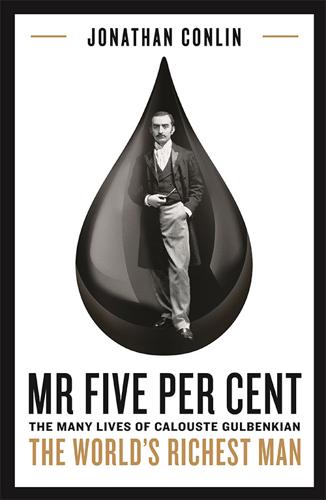
Mr Five Per Cent: The Many Lives of Calouste Gulbenkian, the World's Richest Man
by
Jonathan Conlin
Published 3 Jan 2019
Exactly what kind is unclear because the letter was lost or stolen from Gulbenkian’s secretary, D. H. Young, in February 1920, resulting in an explosion of temper that left Gulbenkian with ‘no heart for business’. CSG to NSG, 6 February 1920. LDN02574. An earlier letter refers to a 15 per cent carried interest in Royal Dutch-Shell’s 60 per cent SEP shareholding; CSG refers to ‘5% which you had ceded and the 10% which I got from the French’. CSG to Deterding, 17 July 1919. SHA, 195/175b. Of course, CSG enjoyed carried shareholdings and overall sales commissions in tandem in many Royal Dutch-Shell subsidiaries, so perhaps he had both. 43.
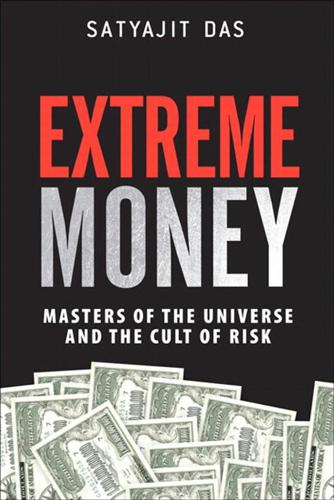
Extreme Money: Masters of the Universe and the Cult of Risk
by
Satyajit Das
Published 14 Oct 2011
Where they were part of the LBO, existing management claimed to know how to fix or improve the business—but only if given a large equity interest. It was legal blackmail. Buyout firms collected a fee, typically 1 percent of each purchase. In addition, the buyout firm charged an annual management fee, around 1–2 percent, on the investors’ funds, managed plus 20 percent carried interest, receiving a share of any investment gains on disposition. They charged annual monitoring and director’s fees. During negotiations, Gerald Saltarelli, chairman of Houdaille, argued that KKR should not be entitled to any fee for buying the company. Kohlberg argued he was entitled to a fee: “I’m an investment banker.”17 Lenders got high interest rates as well as substantial fees.

Power and Progress: Our Thousand-Year Struggle Over Technology and Prosperity
by
Daron Acemoglu
and
Simon Johnson
Published 15 May 2023
The last thing we want today is to make it more expensive for people to work. A second step would be a modest increase in taxes on capital. Eliminating provisions that reduce the effective taxation of capital, such as generous depreciation allowances and the advantageous tax status of private equity and carried interest, would be one way of achieving this. Additionally, moderately higher corporate income taxes would directly increase the marginal tax rates faced by capital owners, further closing the gap between the taxation of capital and labor. It is important to simultaneously close tax loopholes, including schemes that minimize tax liabilities of multinational corporations by shifting their accounting profits across jurisdictions; otherwise, corporate income taxes could be avoided and would not be fully effective.
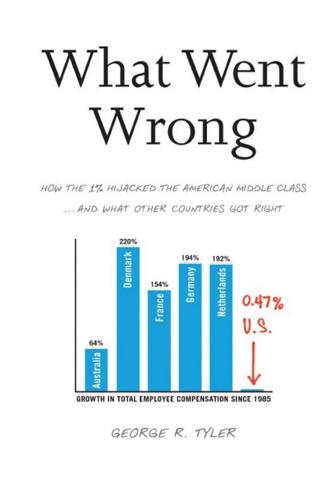
What Went Wrong: How the 1% Hijacked the American Middle Class . . . And What Other Countries Got Right
by
George R. Tyler
Published 15 Jul 2013
The ATO is demanding that the Luxembourg and Cayman Island shell companies pay taxes, interest, and penalties due Australia.76 The lesson for the United States is this: The ATO’s Texas Pacific tax bill presumes logically that the proceeds of the Myer transaction be taxed as ordinary income, rather than as capital gains, as lobbied by Texas Pacific. In December 2010, the ATO determined that since buying and selling firms is the main activity of enterprises such as Texas Pacific, proceeds on such transactions are taxable as ordinary business income, not as capital gains.77 This is the same logic involved in the carried-interest debate in the US Congress, where reform is presently gridlocked by Congressional Republicans. Restore Financial Market Discipline by Eliminating Red Queens The American economy needs to be protected from the baker’s dozen Red Queens that have emerged in recent decades of willful neglect of antitrust laws.

The Code: Silicon Valley and the Remaking of America
by
Margaret O'Mara
Published 8 Jul 2019
The Russian also made a large investment in Twitter.11 Lurking behind all of this cash, domestic and foreign, was the angel that had been there since the very beginning: the U.S. government. American financiers had so much to invest because of a U.S. tax code that—thanks to five decades of sustained lobbying—strongly advantaged those who made money from money. The capital gains tax stood at 15 percent. The carried-interest deduction stood firm, despite periodic attempts to abolish it. VCs, hedge fund managers, and private equity funds alike were able to rake in billions for managing other people’s investments, and call all of it their “capital gains.” Then there were the taxes on corporate revenue. For more than fifty years, the U.S. had allowed American corporations operating overseas to defer taxation on profits earned in non-U.S. markets.
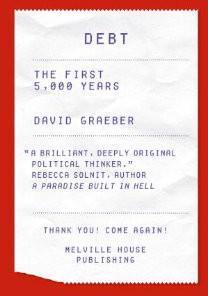
Debt: The First 5,000 Years
by
David Graeber
Published 1 Jan 2010
He argued that the fact that Deuteronomy allows usury under any circumstances demonstrates that this could not have been a universal “spiritual law,” but was a political law created for the specific ancient Israeli situation, and therefore, that it could be considered irrelevant in different ones. 29. And in fact, this is what “capital” originally meant. The term itself goes back to Latin capitale, which meant “funds, stock of merchandise, sum of money, or money carrying interest” (Braudel 1992:232). It appears in English in the mid–sixteenth century largely as a term borrowed from Italian bookkeeping techniques (Cannan 1921, Richard 1926) for what remained when one squared property, credits, and debts; though until the nineteenth century, English sources generally preferred the word “stock”—in part, one suspects, because “capital” was so closely associated with usury. 30.

Chokepoints: American Power in the Age of Economic Warfare
by
Edward Fishman
Published 25 Feb 2025
They were built with Chinese materials by Chinese companies that employed Chinese laborers, allowing Beijing to export some of the excess labor capacity created by its colossal 2008 stimulus package. More troublingly, recipients of Chinese largesse soon found themselves drowning in debt and interest payments, as BRI loans carried interest rates several times higher than typical infrastructure loans. When countries struggled to repay, Beijing simply seized the infrastructure that it built. This is how China secured a ninety-nine-year lease on Sri Lanka’s Hambantota port in 2017. The practice became known as “debt-trap diplomacy.”
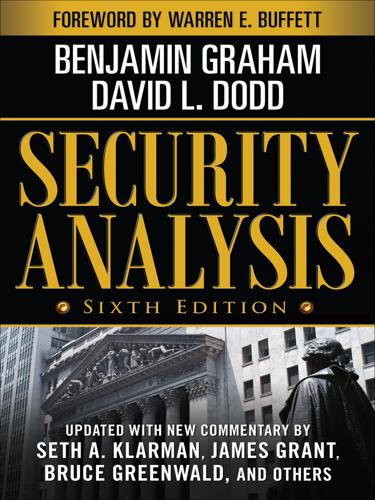
Security Analysis
by
Benjamin Graham
and
David Dodd
Published 1 Jan 1962
By the way, the previous approach to accounting for stock options was even odder: options granted with a strike price equal to the market price had no expense impact, but those granted below market would, in some cases, result in an expense every year thereafter that the underlying stock rose. There is equal confusion to be found in the FASB approach to accounting for derivatives, hedging, pensions, leases, and recognition of profits for carried interests, to name a few. Now companies can even record a profit if their debt gets downgraded. Sometimes accounting rules seem designed to carry us very far from economic reality, and some managers are quite amenable to taking investors on such a journey. Having analyzed the historical record, the second and far greater challenge is to determine “the utility of this past record as an indication of future earnings.”
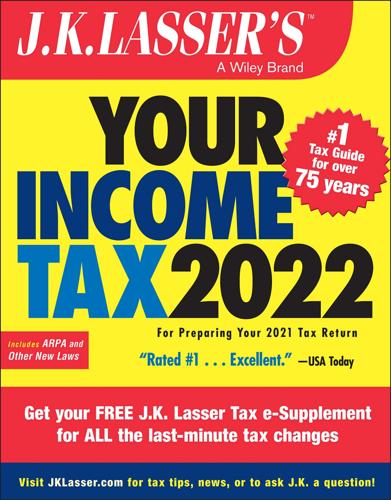
J.K. Lasser's Your Income Tax 2022: For Preparing Your 2021 Tax Return
by
J. K. Lasser Institute
Published 21 Dec 2021
Cullen, 118 F.2d 651 (5th Cir. 1941), rev'g 41 BTA 1042 Marrs McLean, 120 F.2d 942 (5th Cir. 1941), cert. denied, 314 U.S. 670 Fred T. Hogan, 1 TCM 208 (1942), aff'd, 141 F.2d 92 (5th Cir. 1944), cert. denied, 323 U.S. 710 Net profits Kirby Petroleum Co., 326 U.S. 599 (1946) Thomas A. O'Donnell, 303 U.S. 370 (1938) Carried interest Abercrombie Co., 162 F.2d 338 (5th Cir. 1947), aff'g 7 TC 120 (1946) (Nonacq.) Donald McMurray, 60 F.2d 843 (10th Cir. 1935), cert. denied, 287 U.S. 664 Carved-out oil payments P. G. Lake, Inc., 356 U.S. 260 (1958) Murphy J. Foster, 324 F.2d 702 (5th Cir. 1963) 9.12 PRODUCTION COSTS OF BOOKS AND CREATIVE PROPERTIES IRC §263A Exemption for freelance authors, artists, and playwrights IRC §263A(h) 9.13 DEDUCTING THE COST OF PATENTS OR COPYRIGHTS Patent and copyright Reg. §1.167(a)-6(a) Depreciation deduction Associated Partners, Inc., 4 TC 979 (1945) Rev.